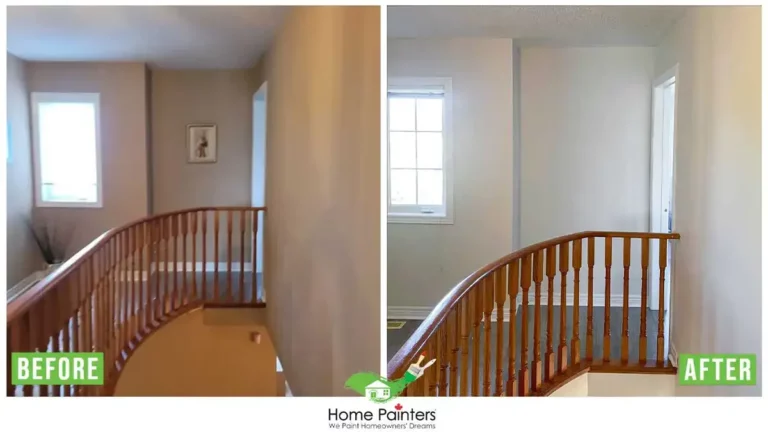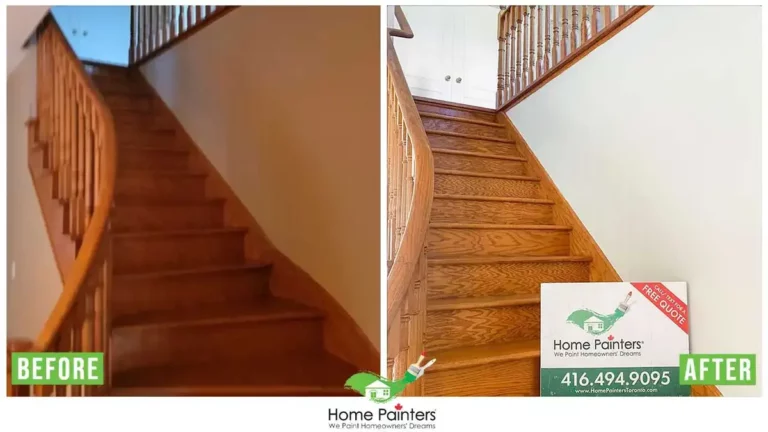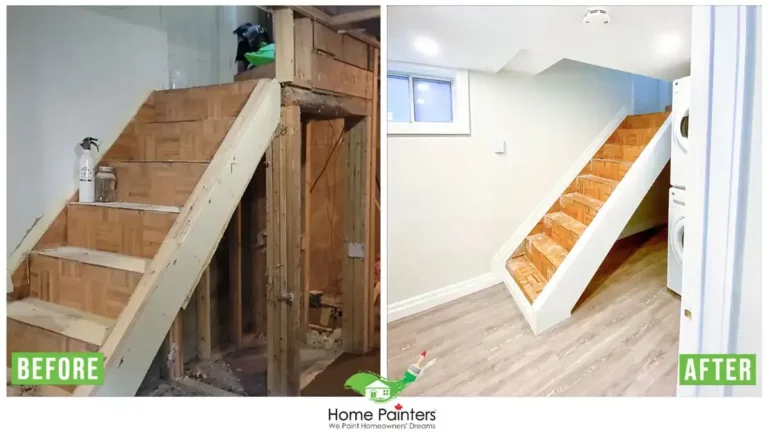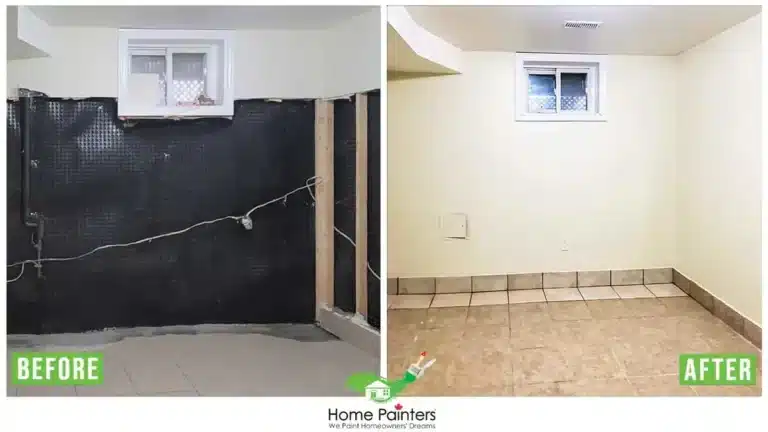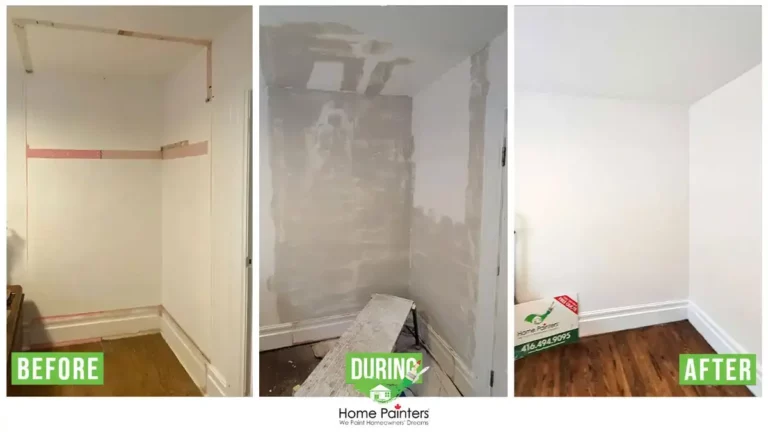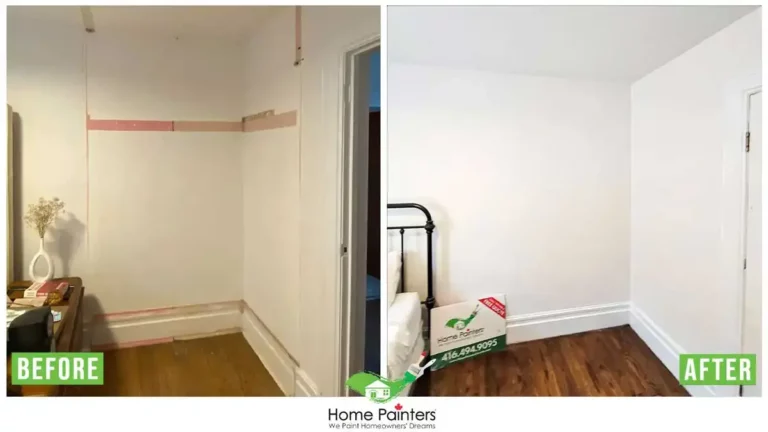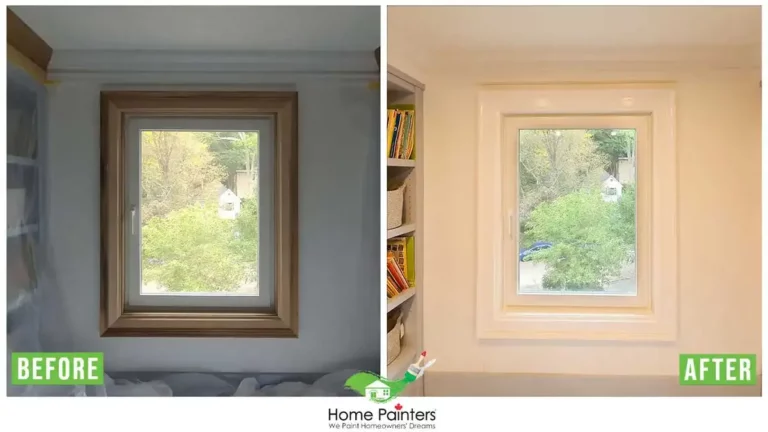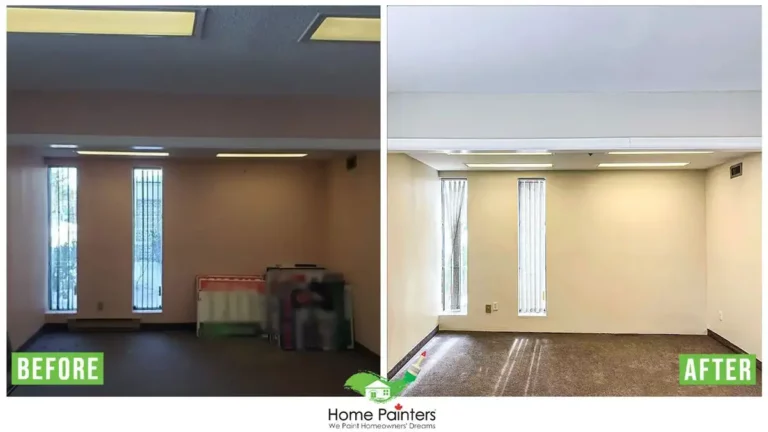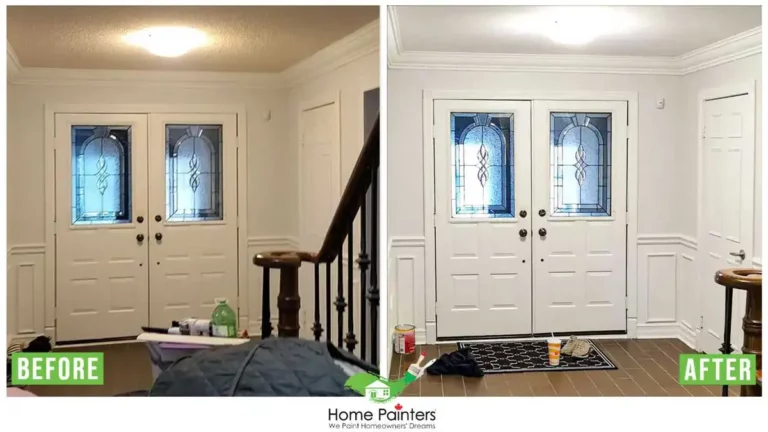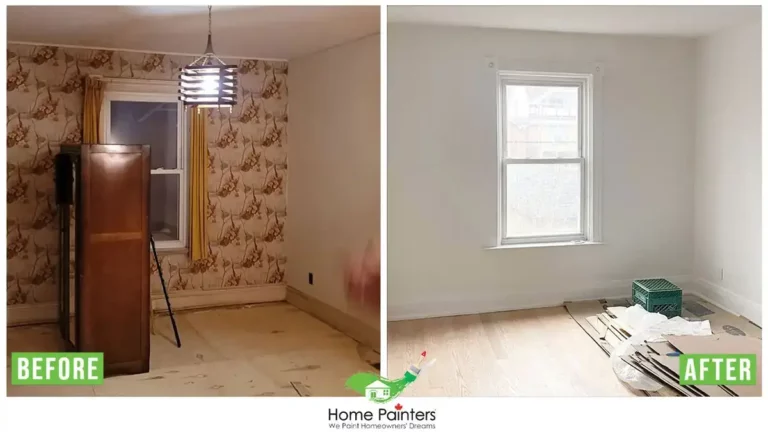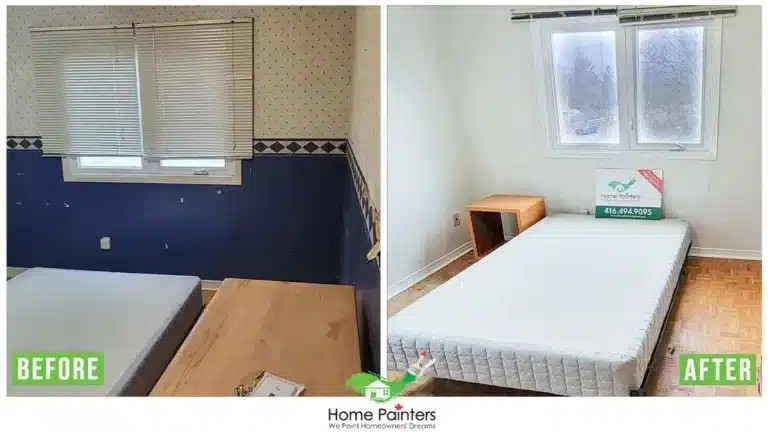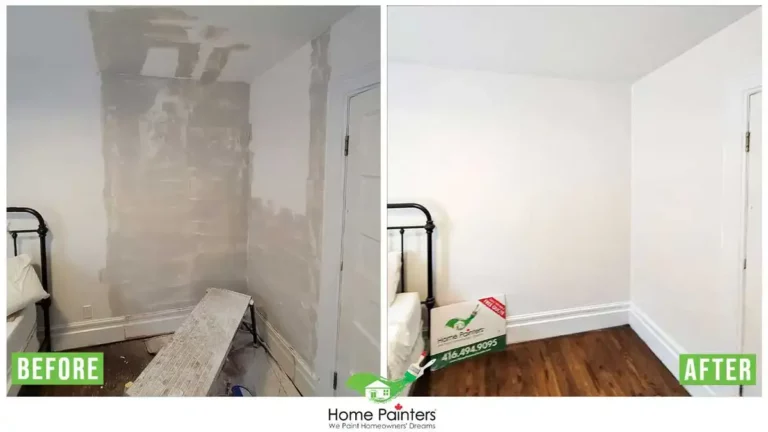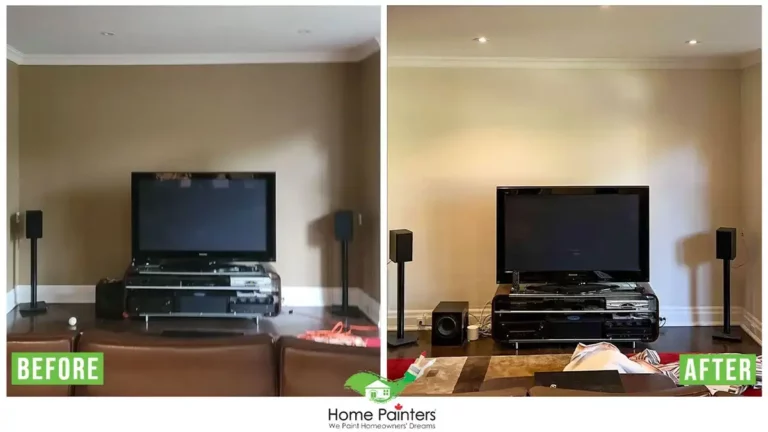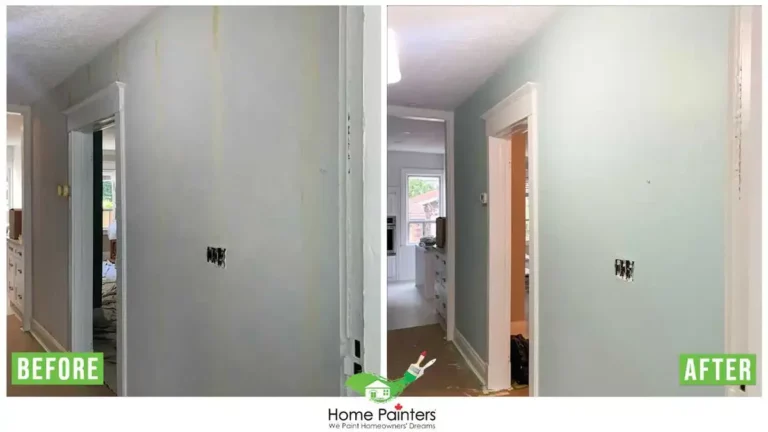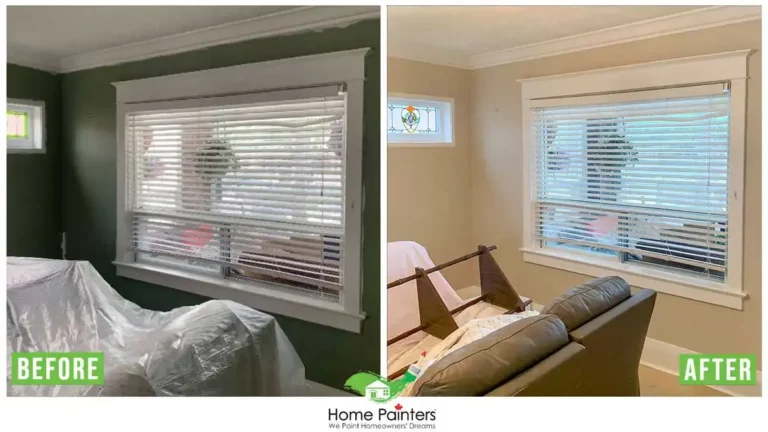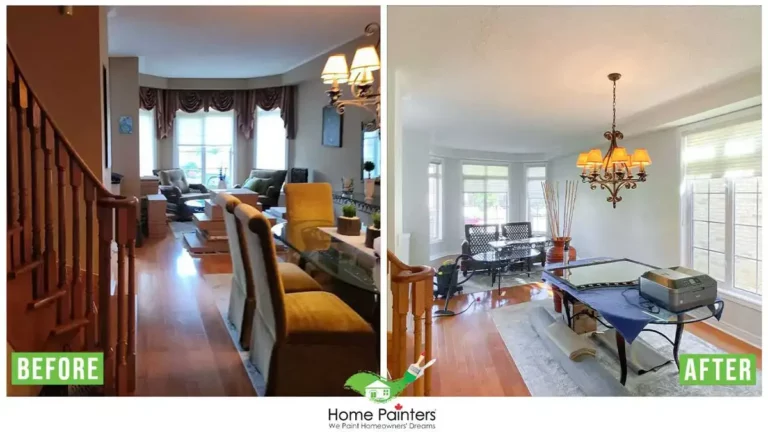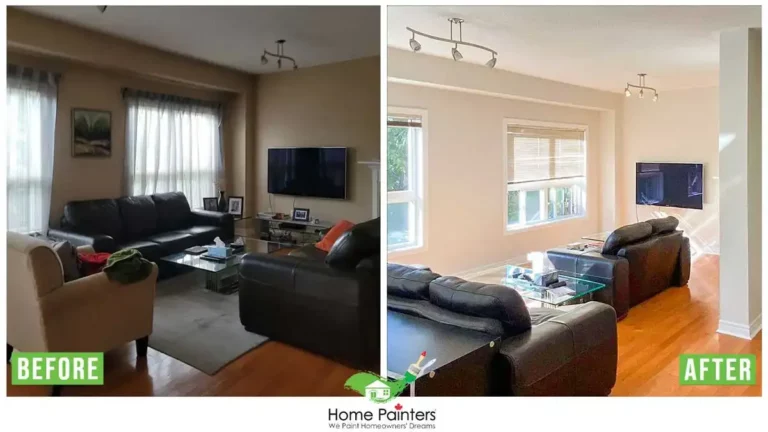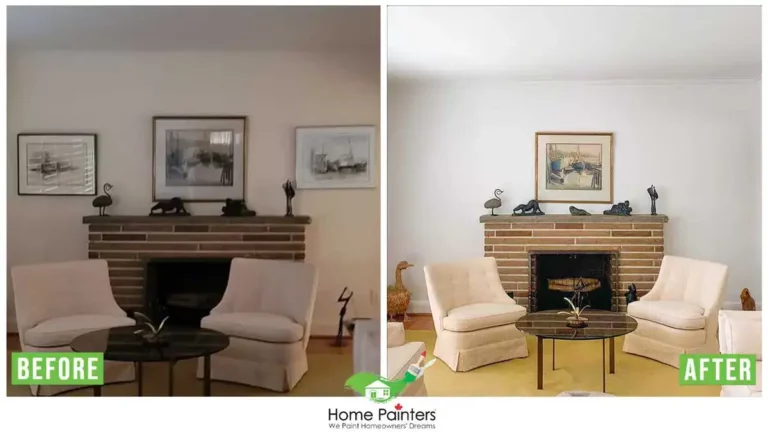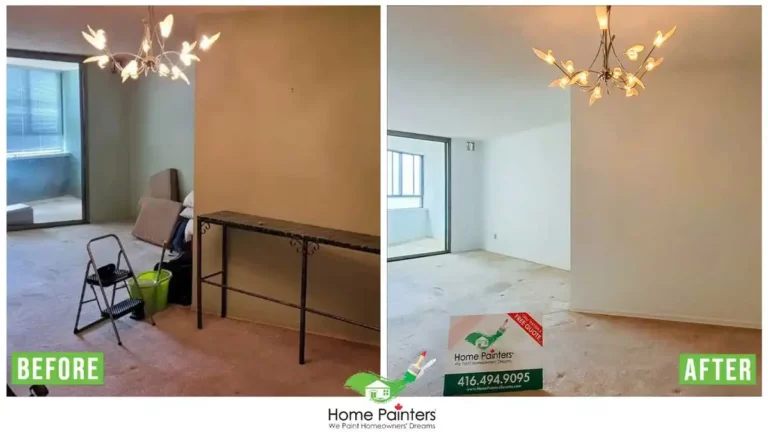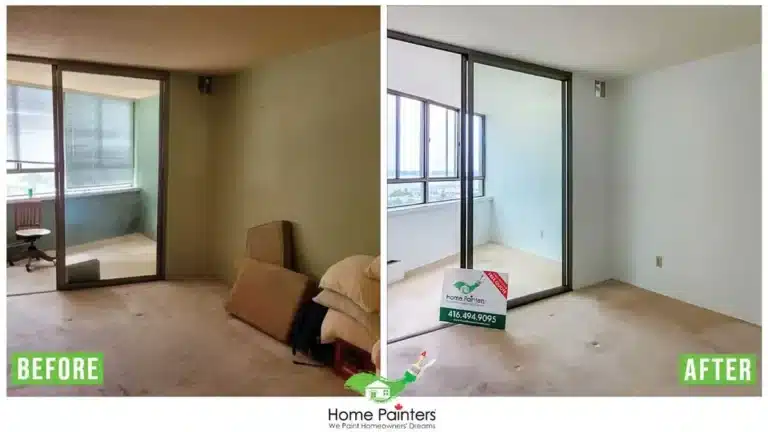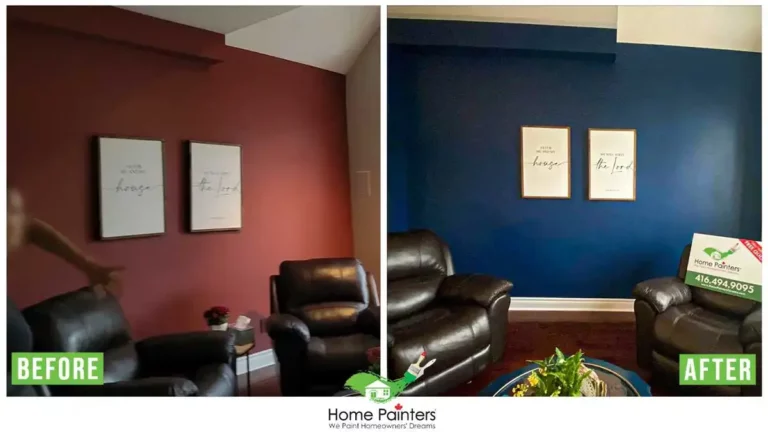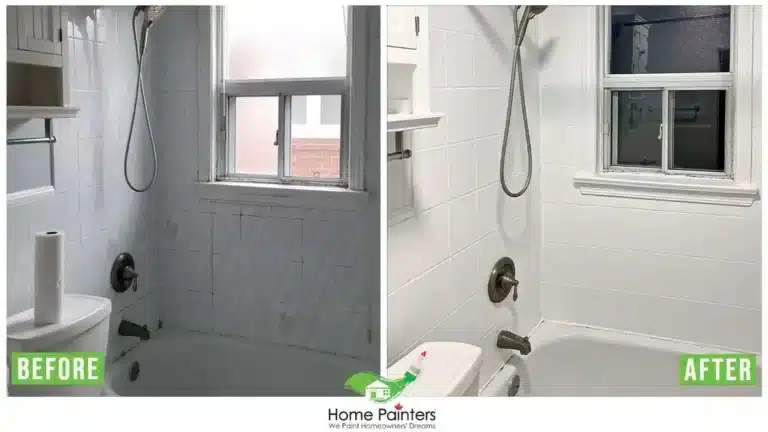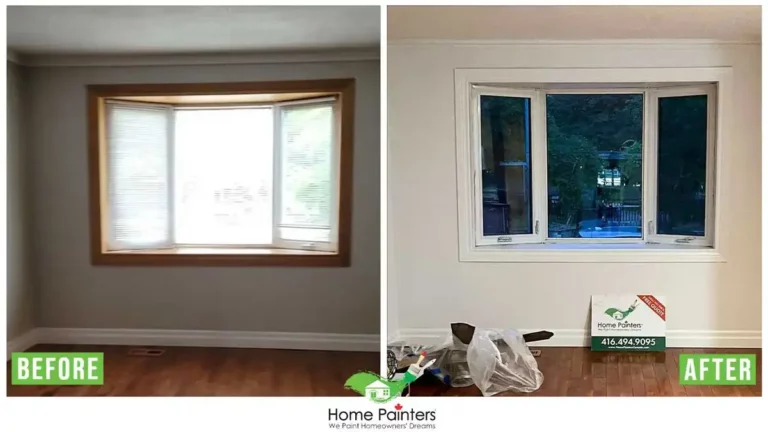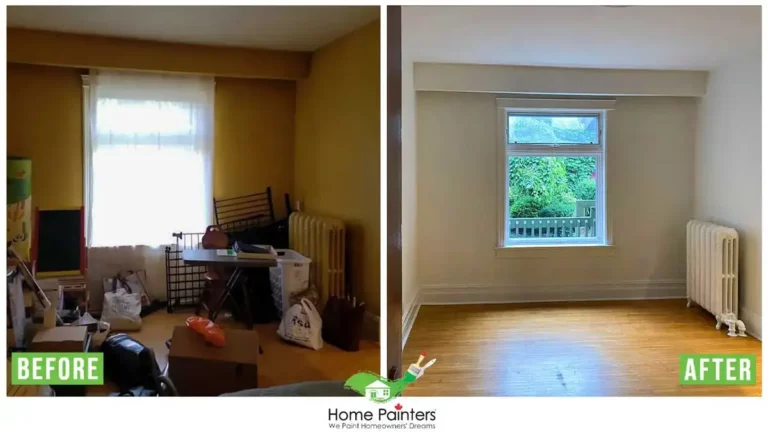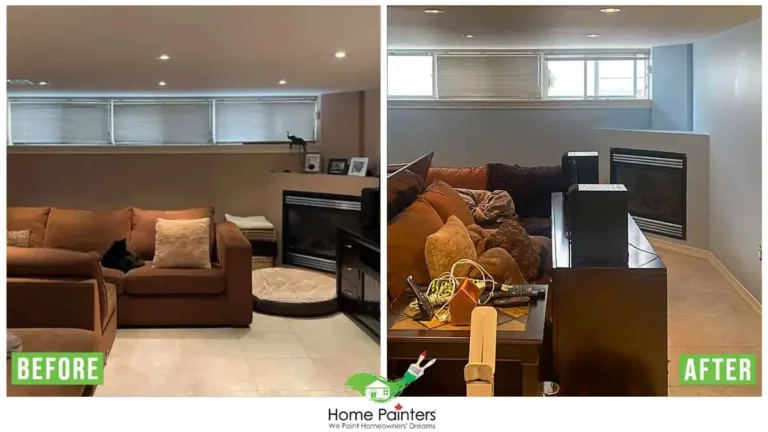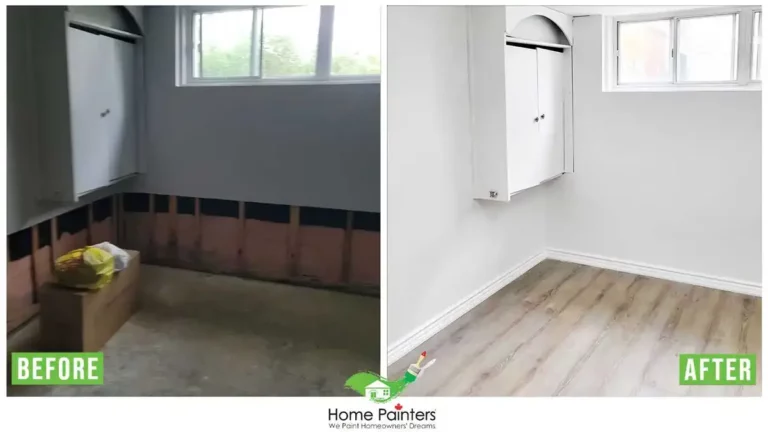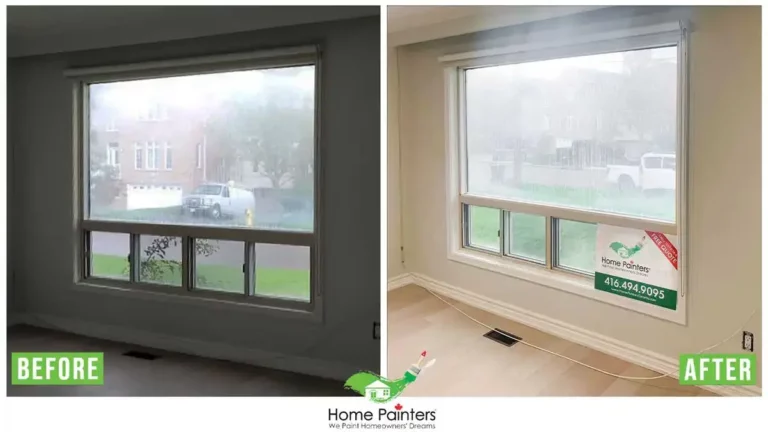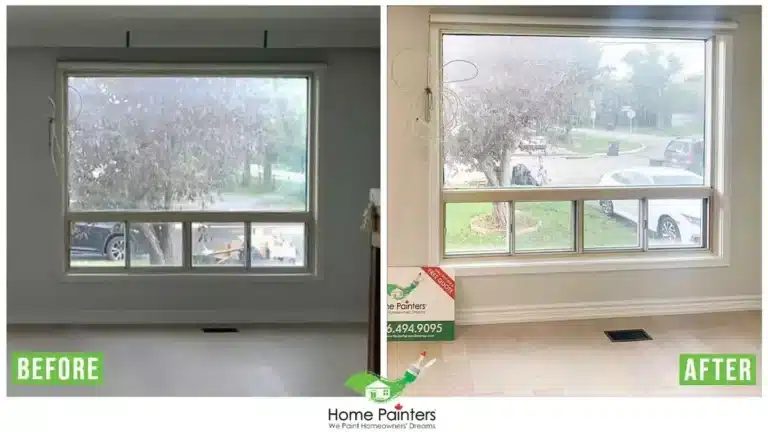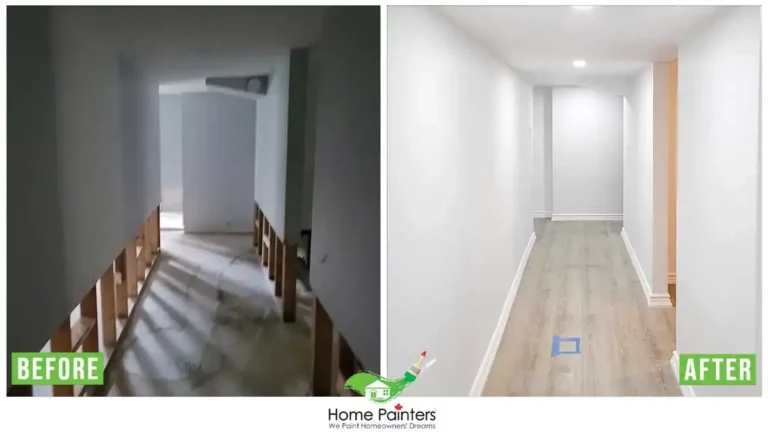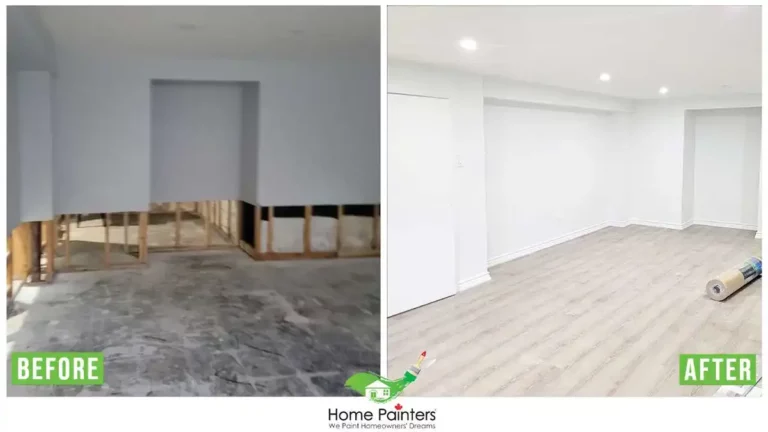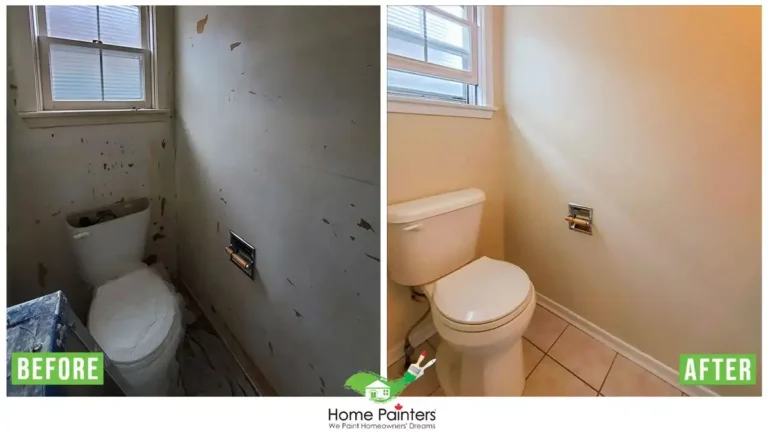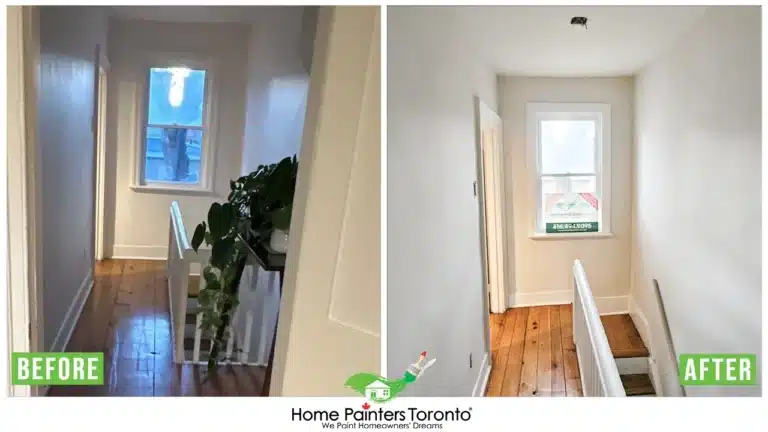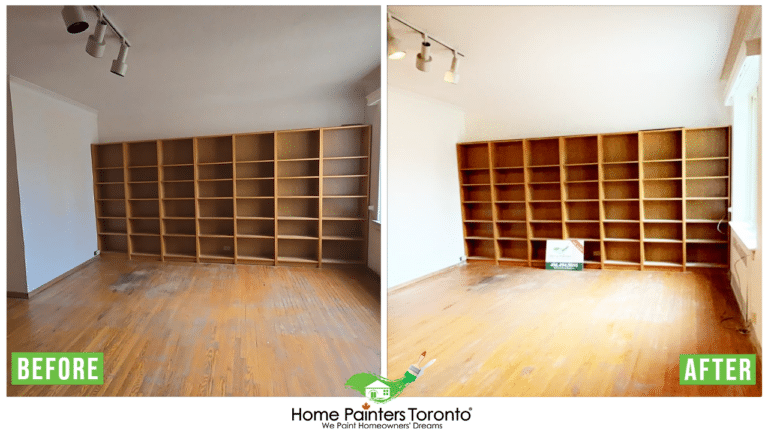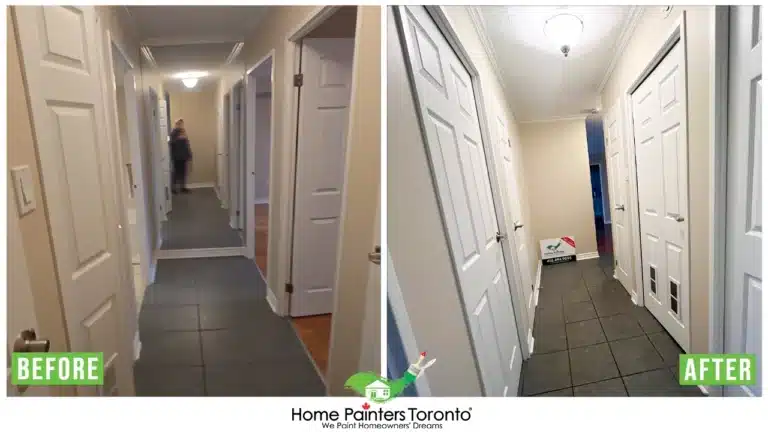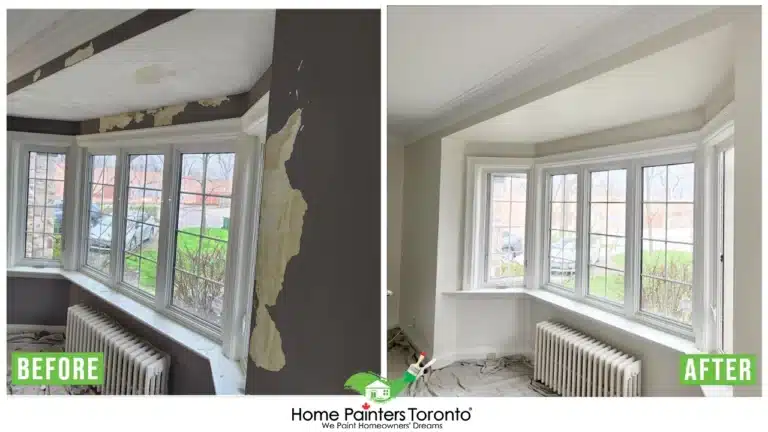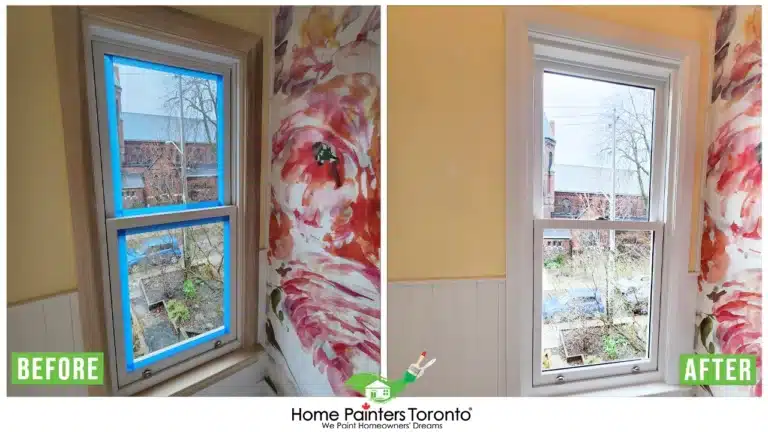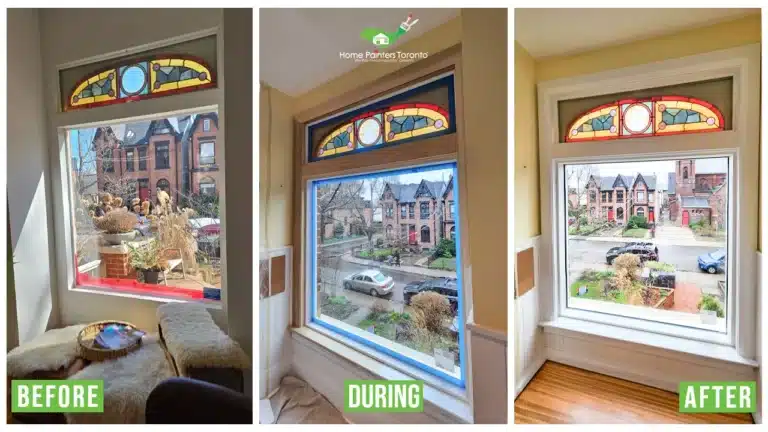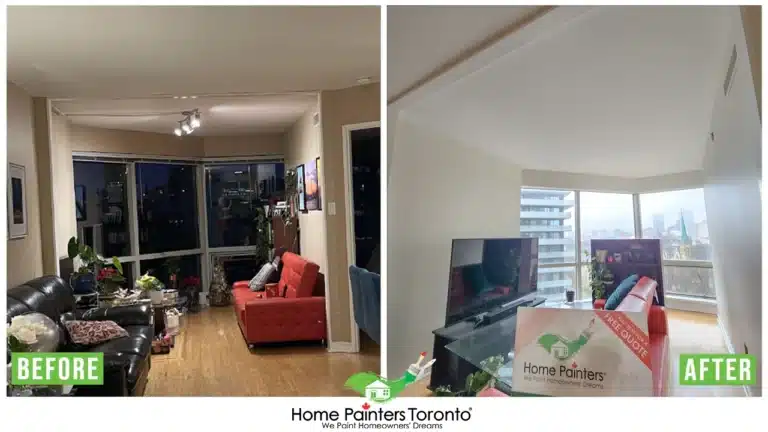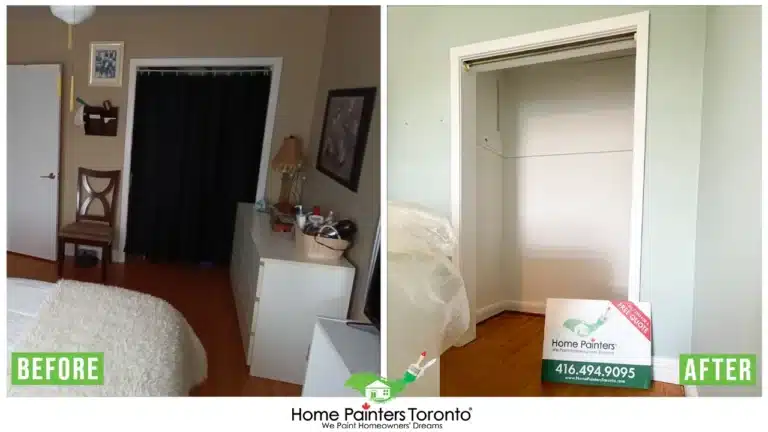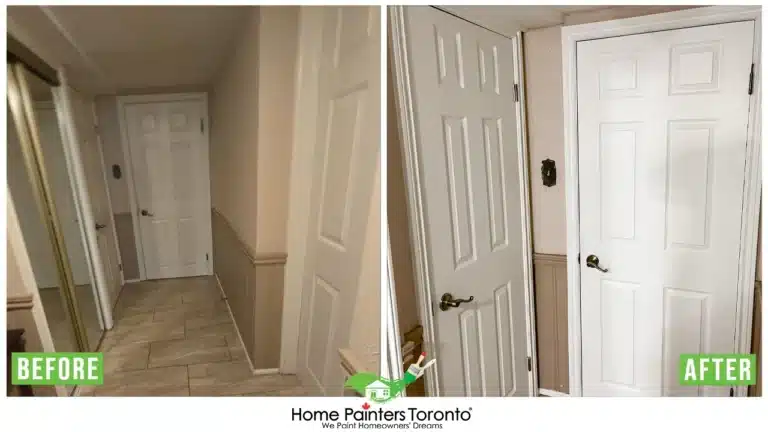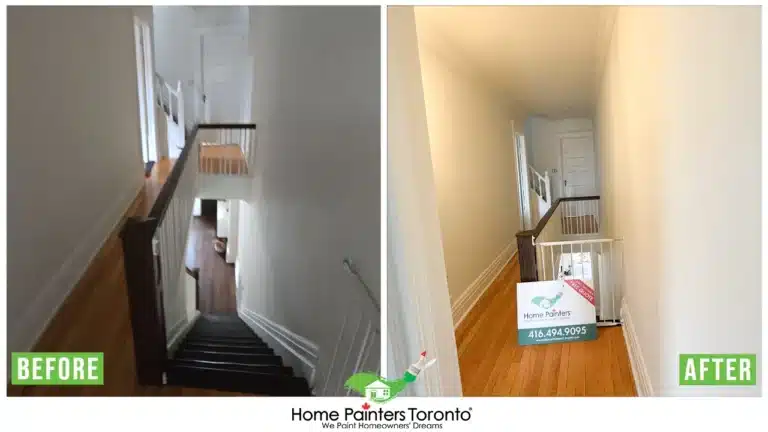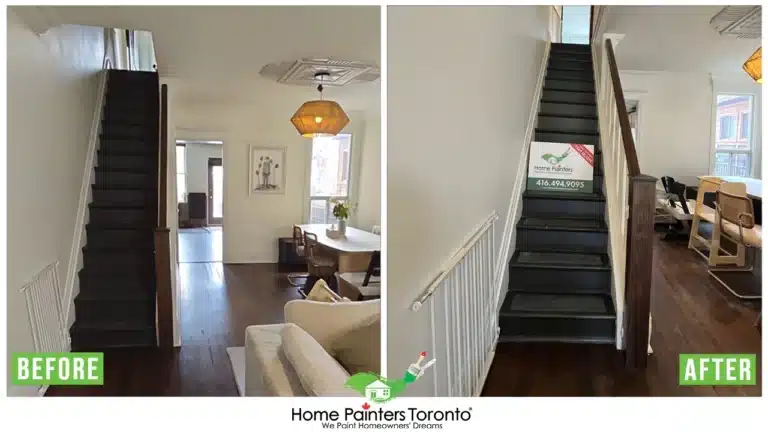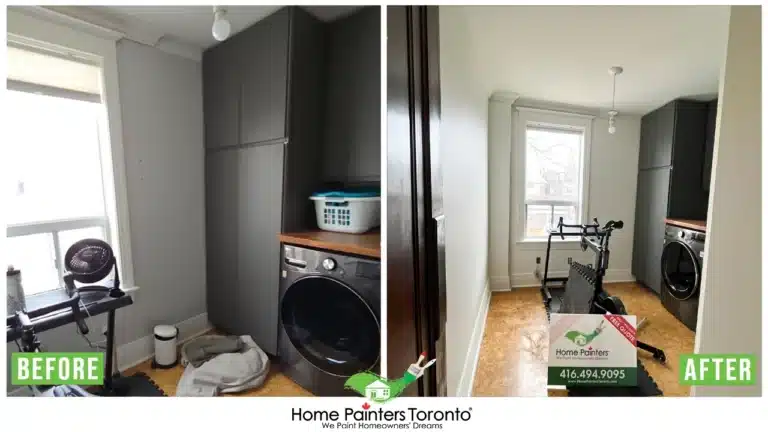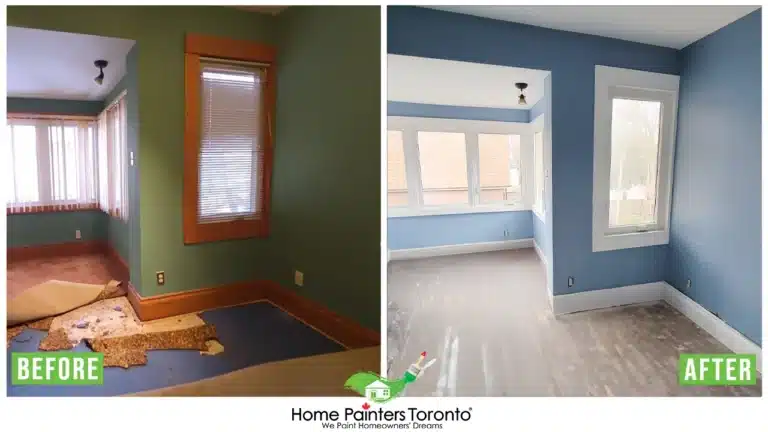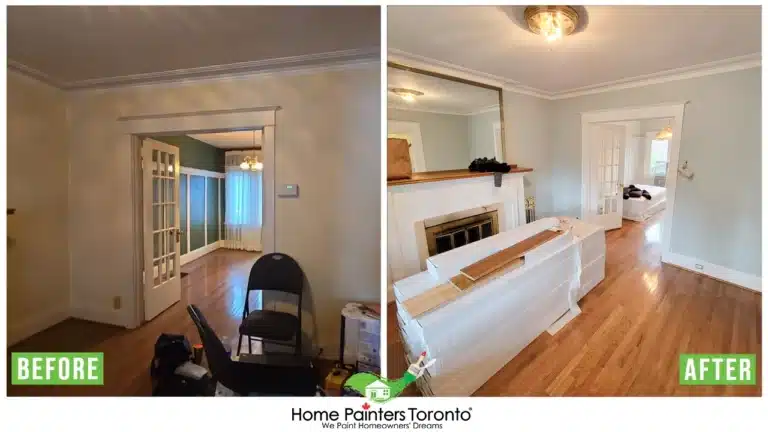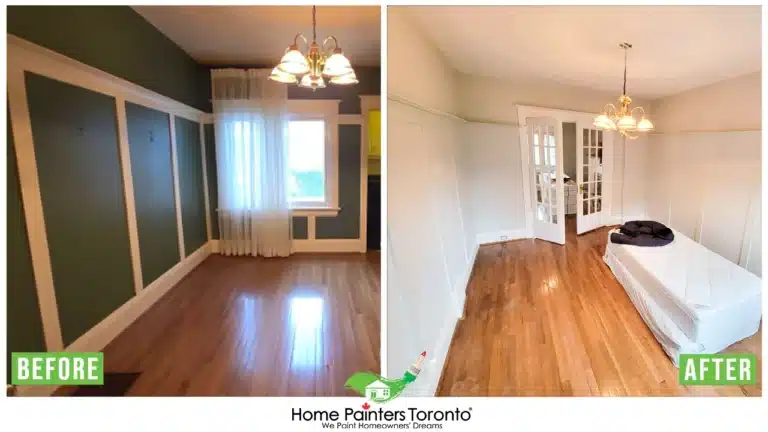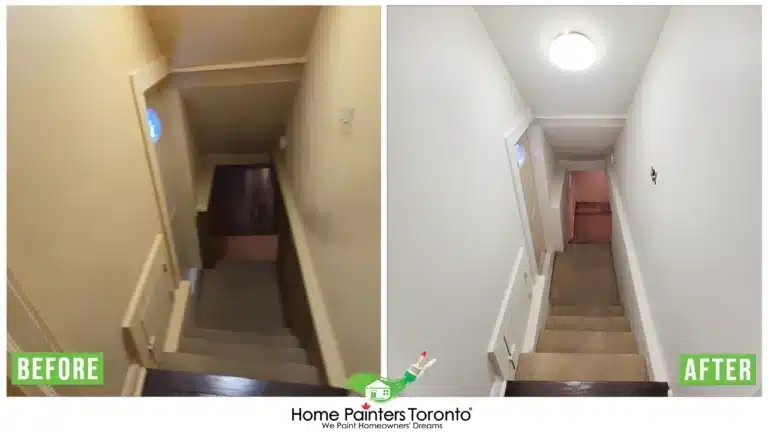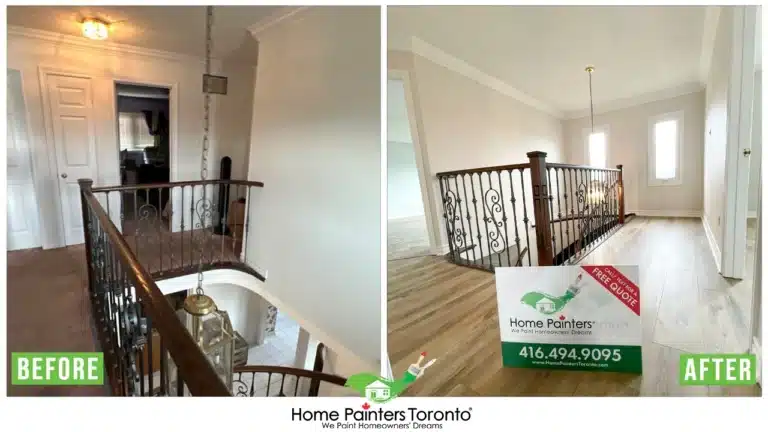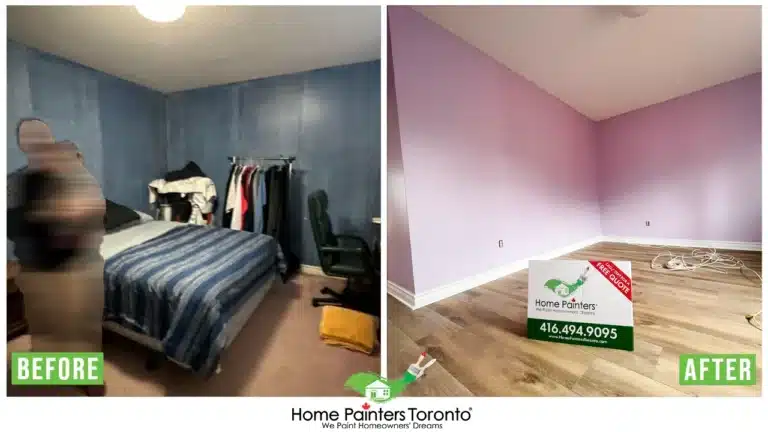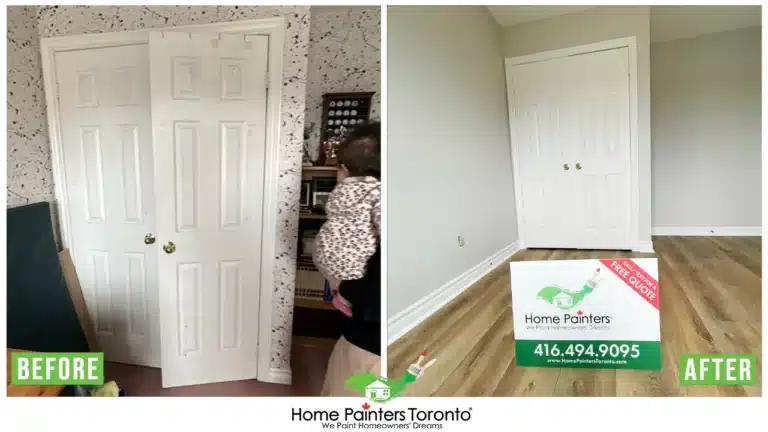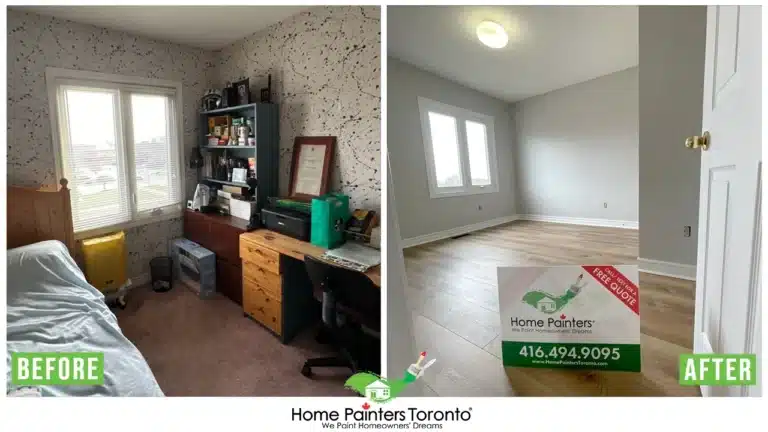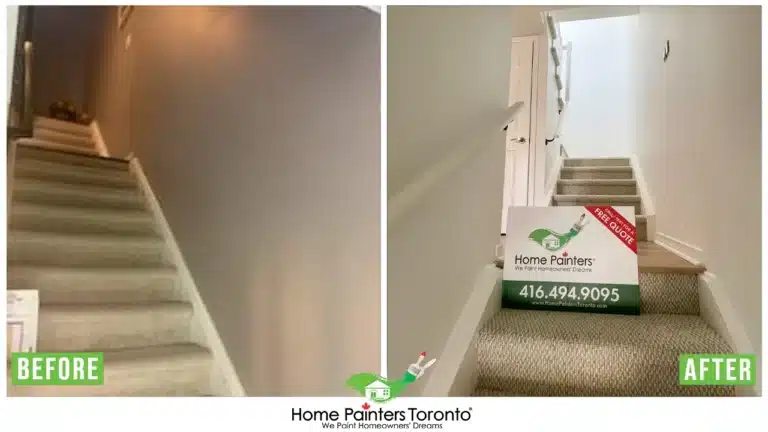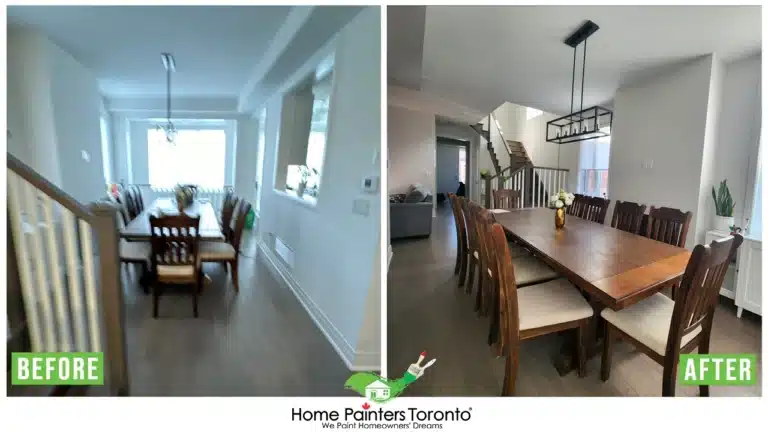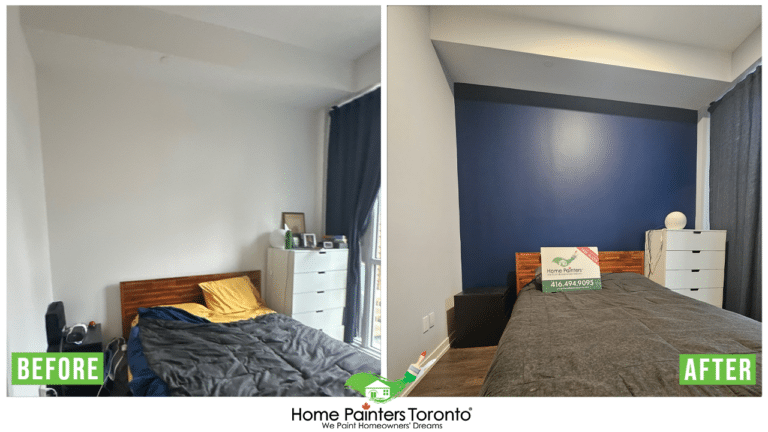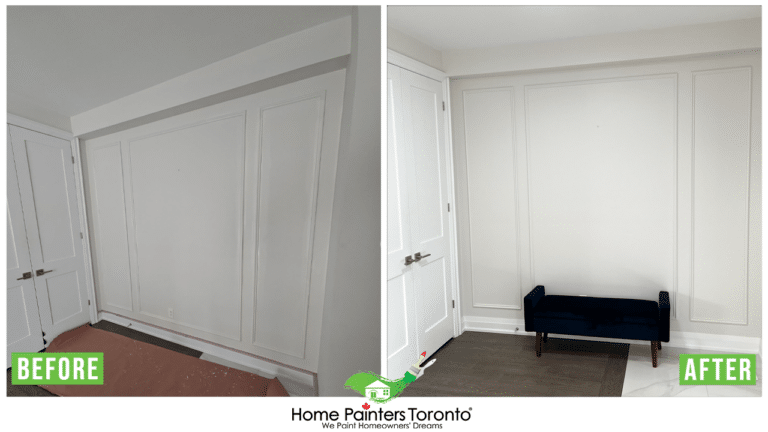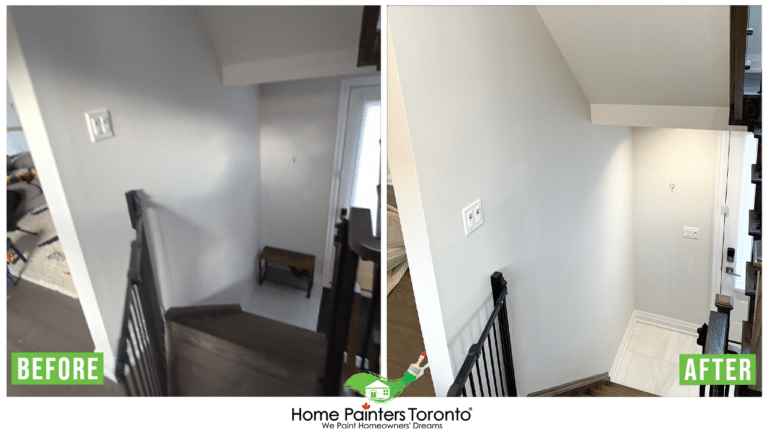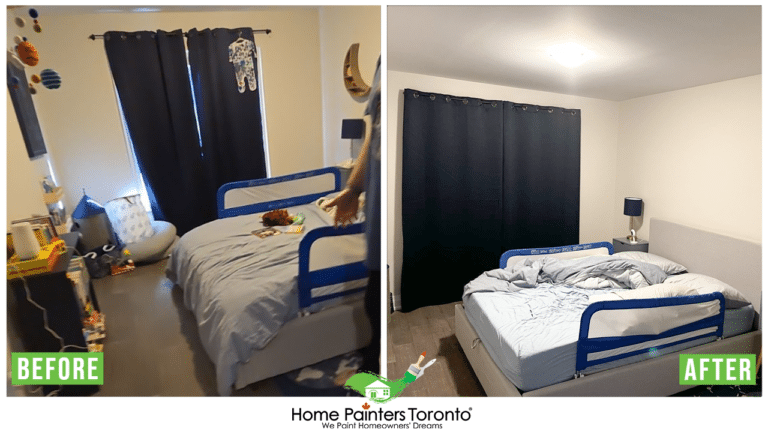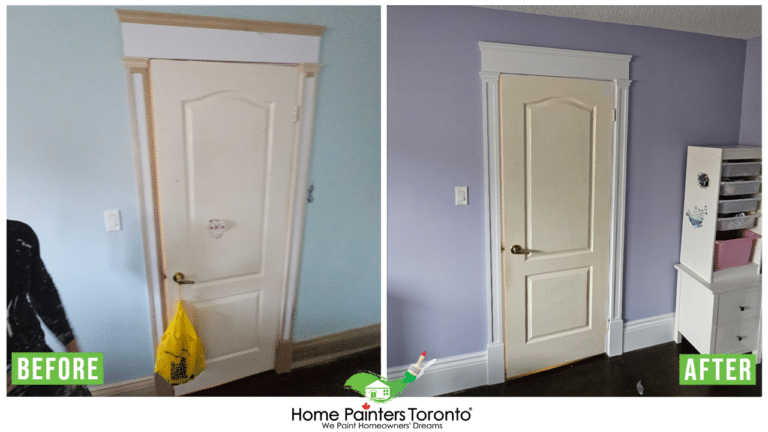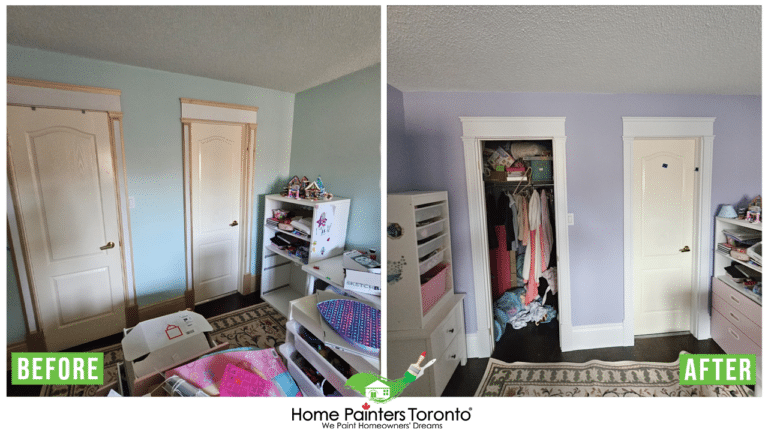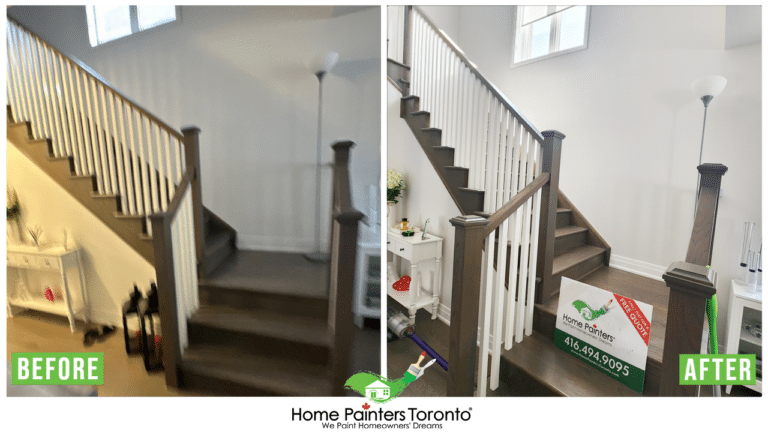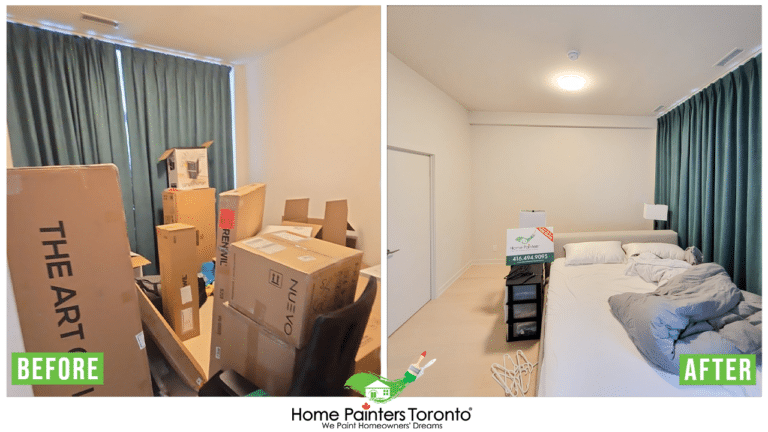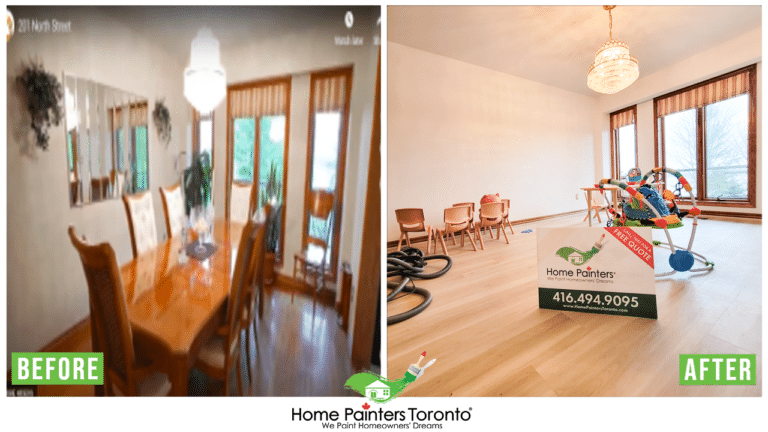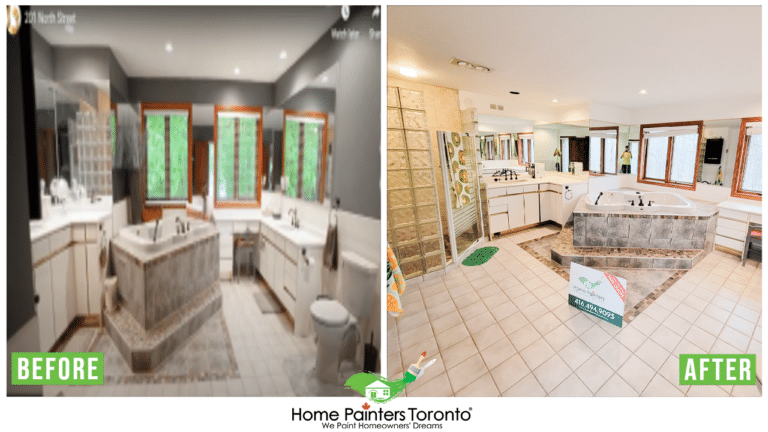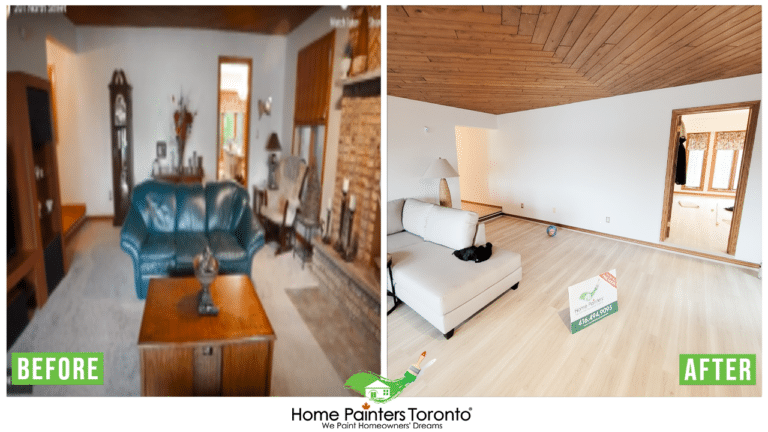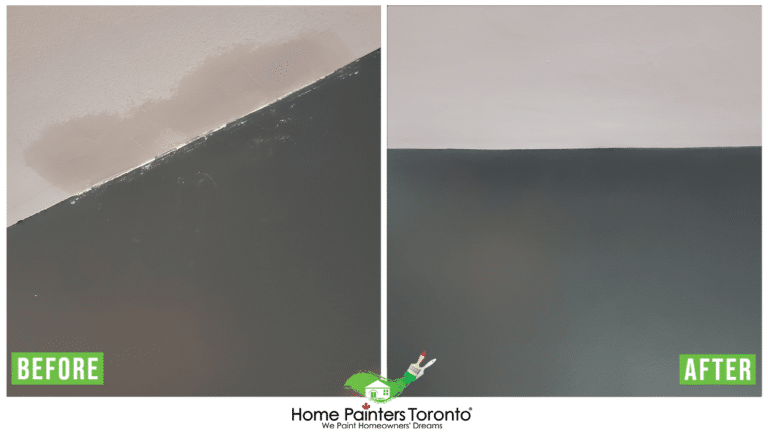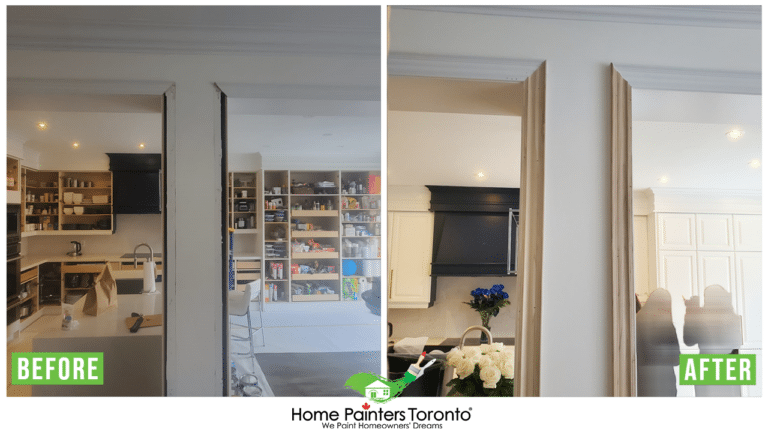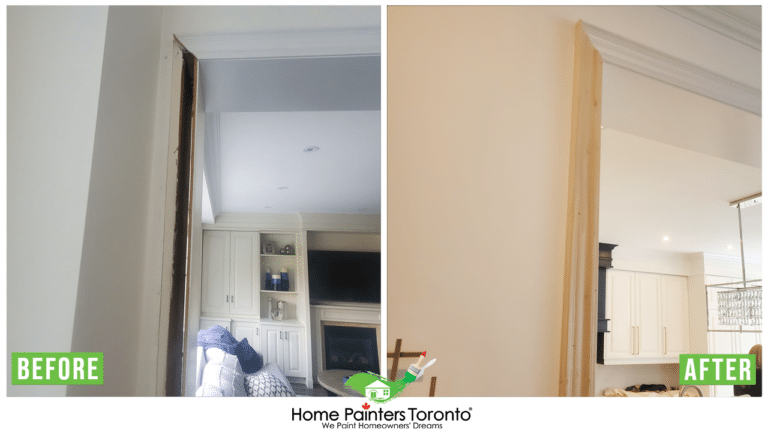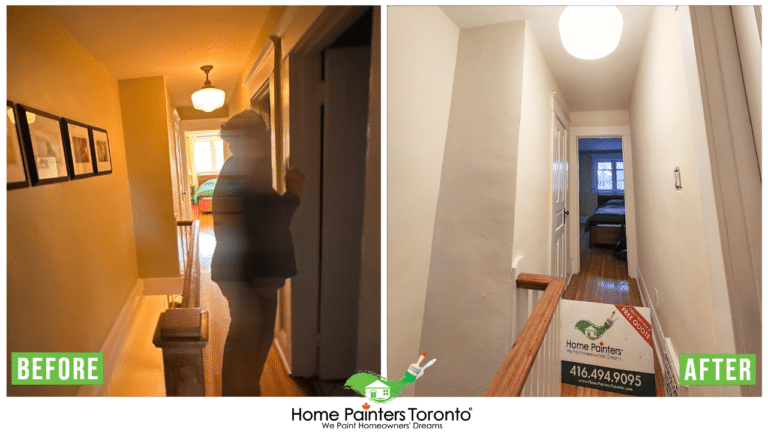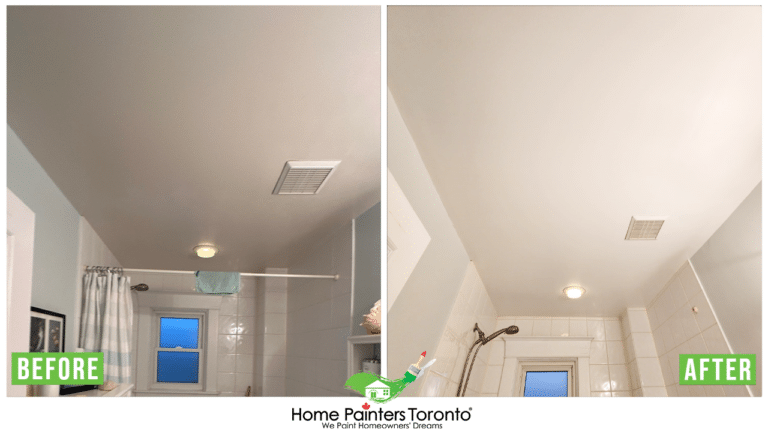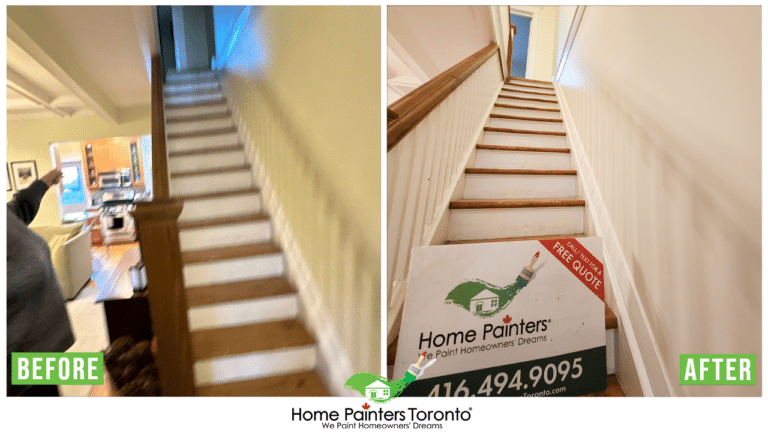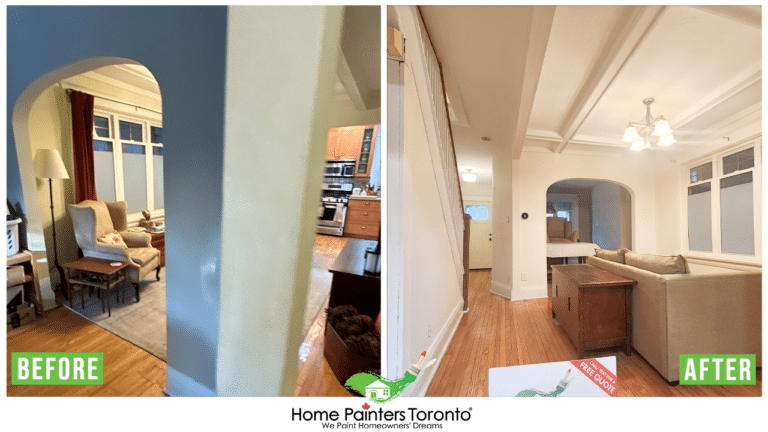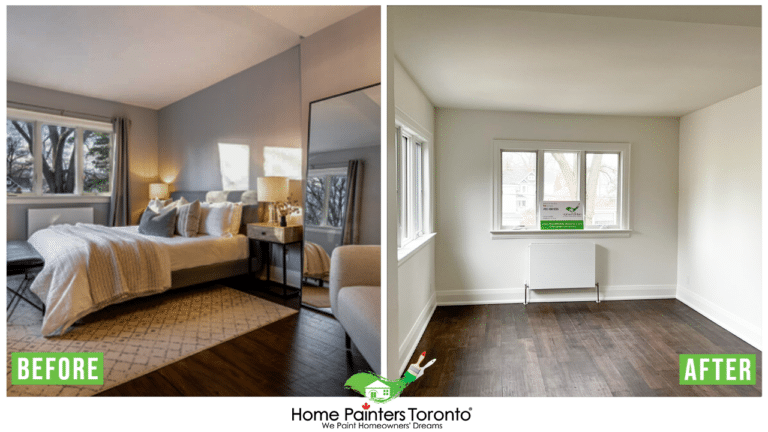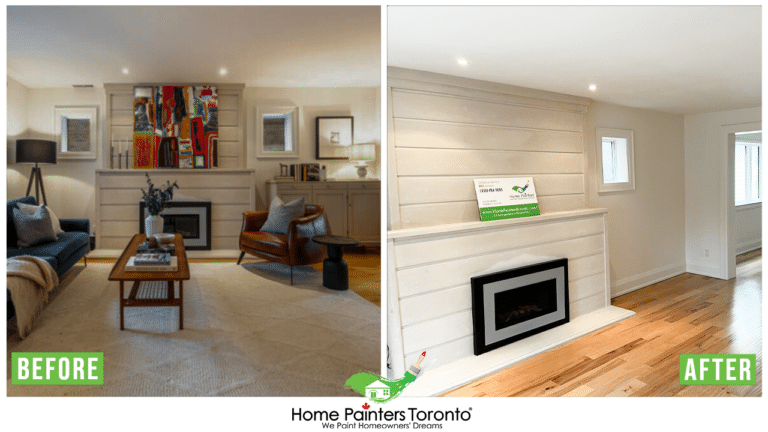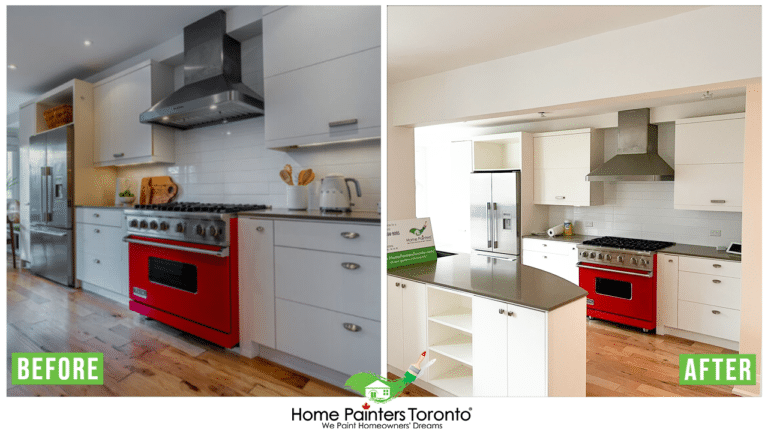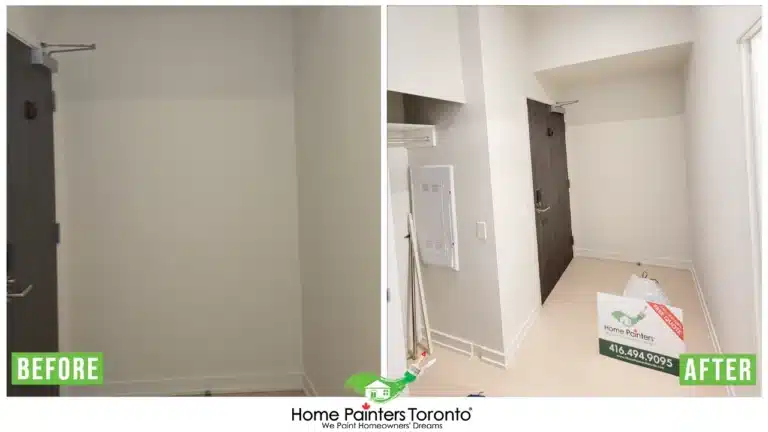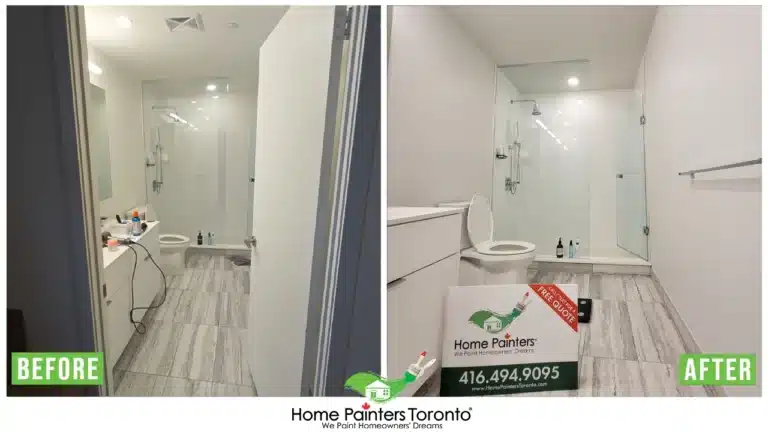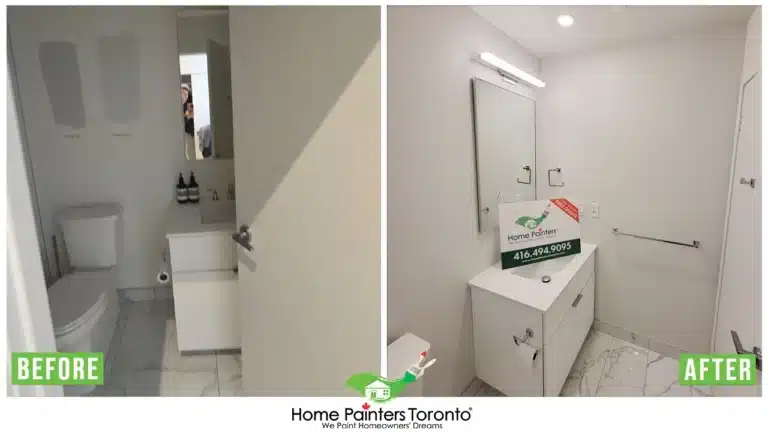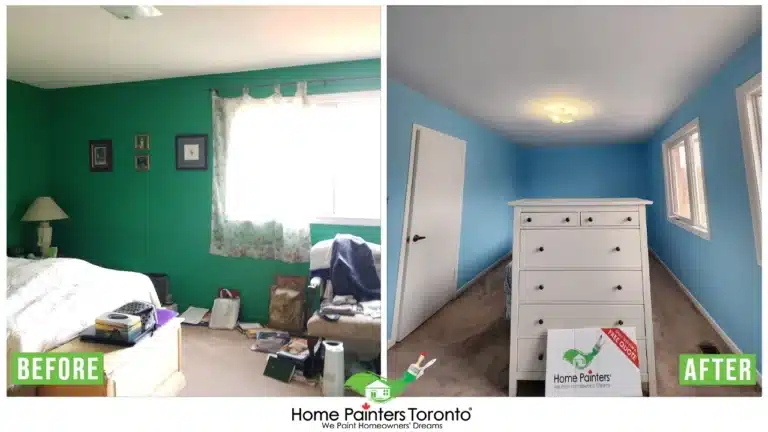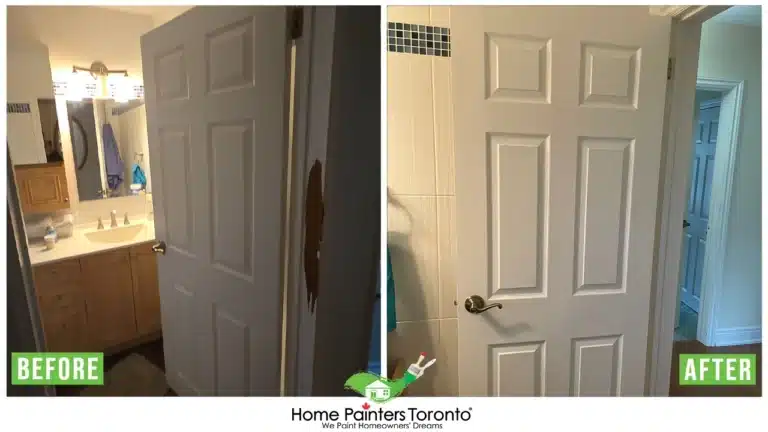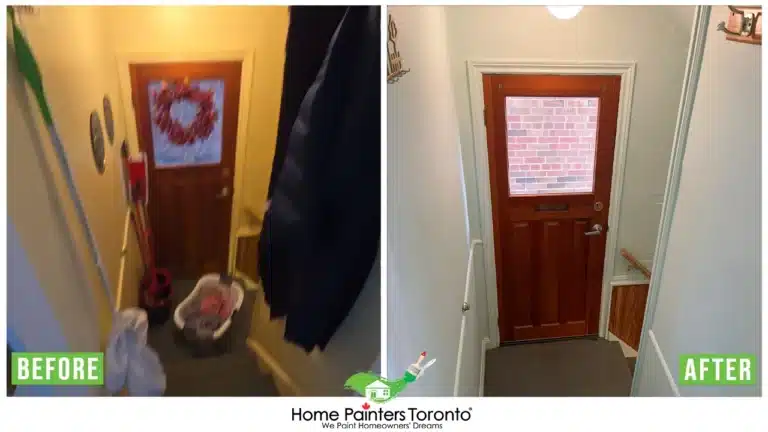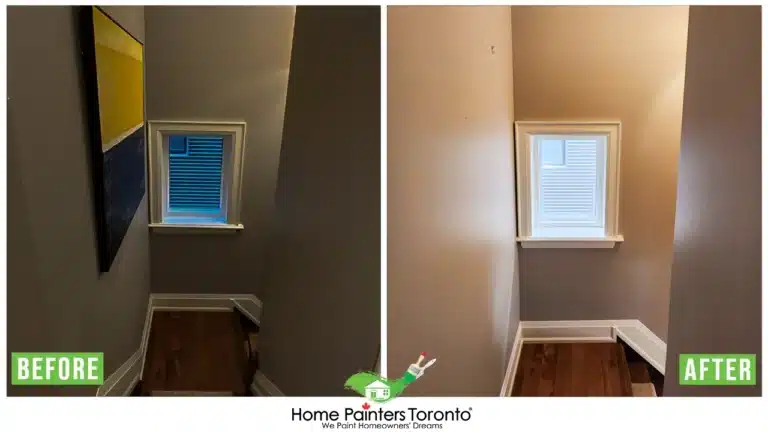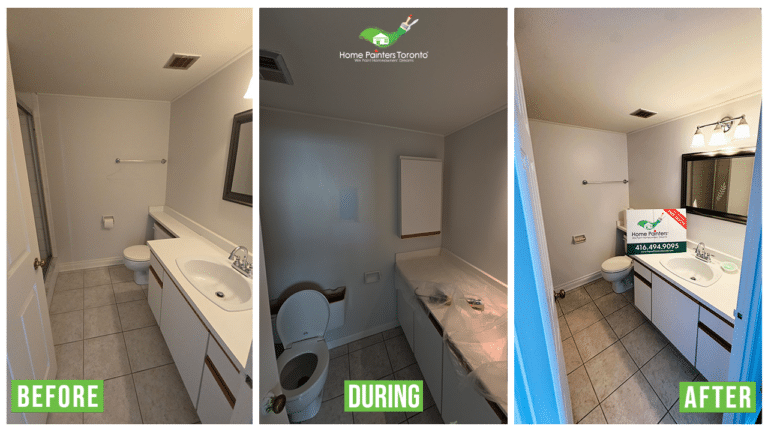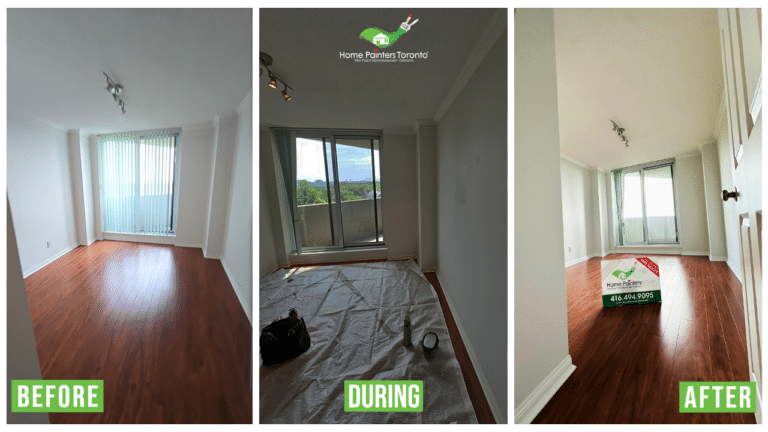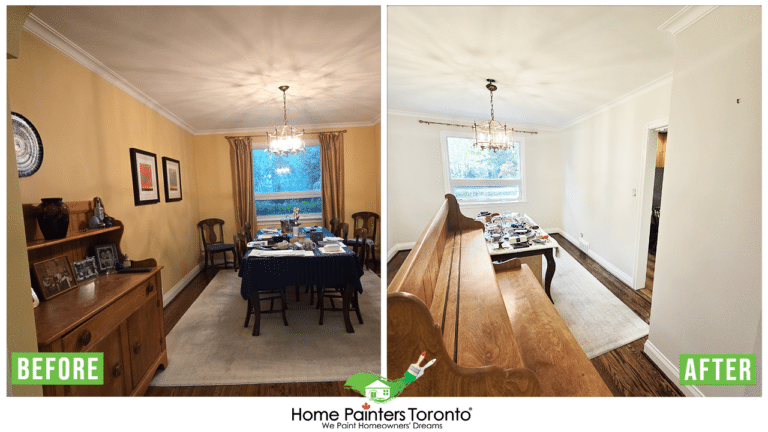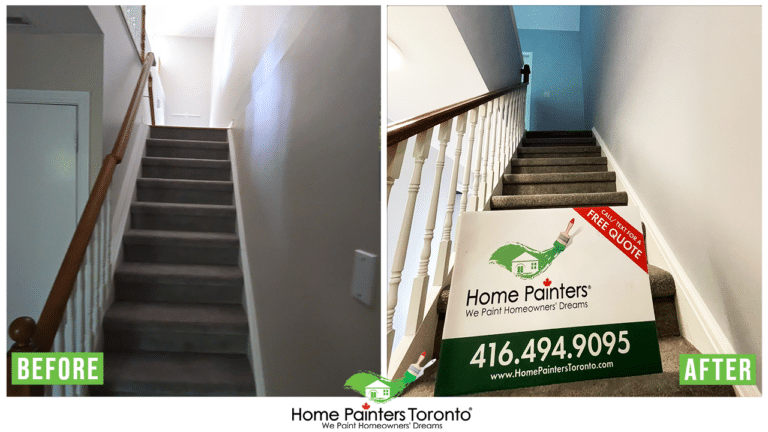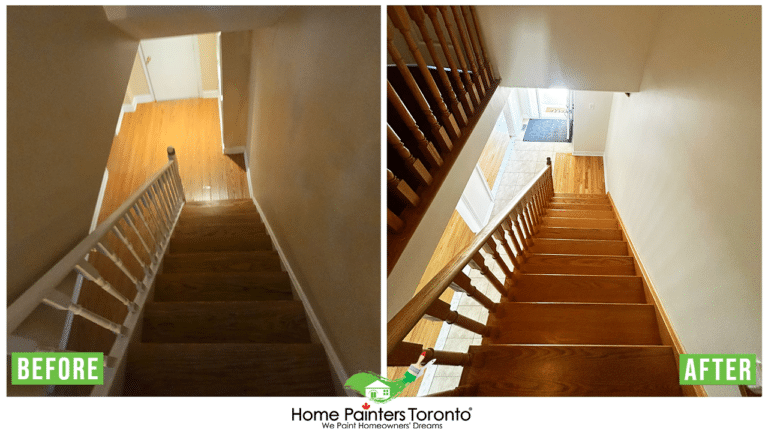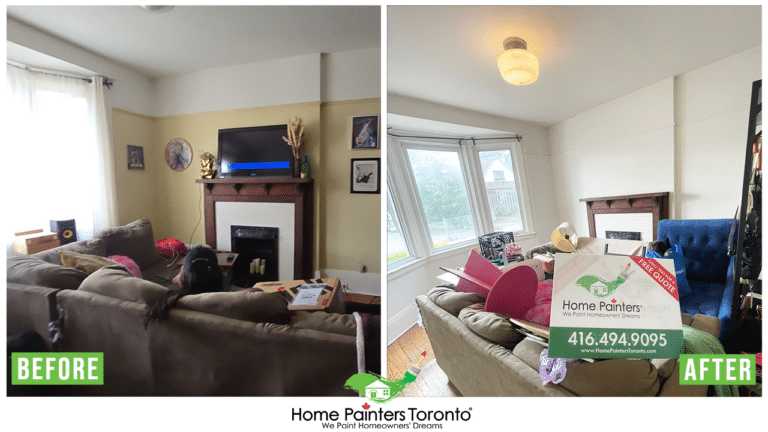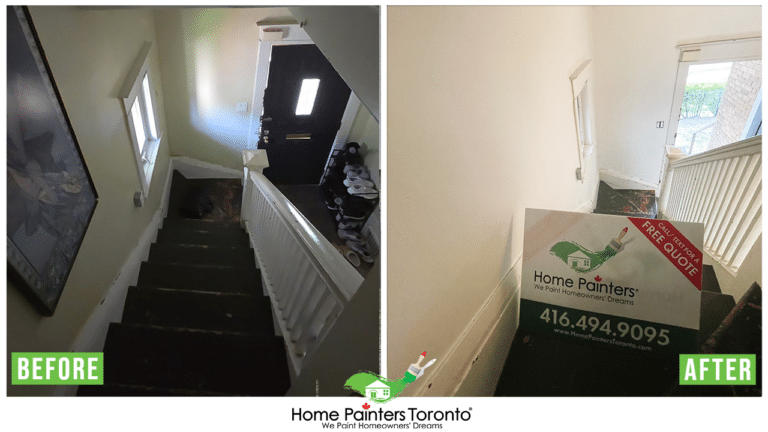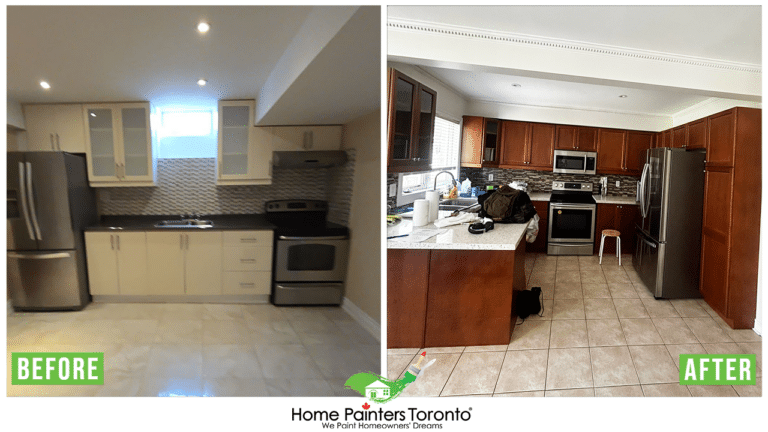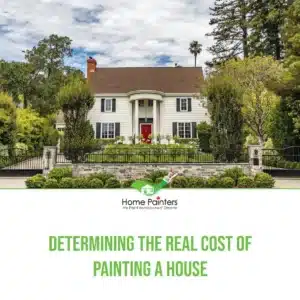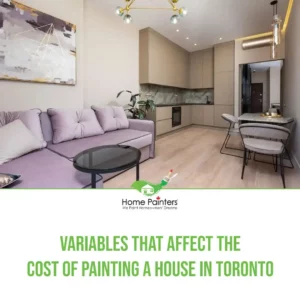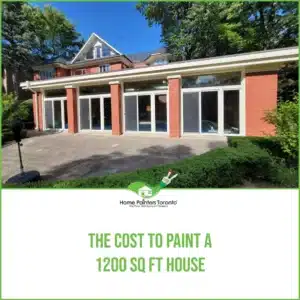
The cost of interior house painting in Toronto is an important factor to consider when planning a project. As a homeowner, it is essential that you have a clear idea of the appropriate house painting cost before you begin in order to plan accordingly. Otherwise, you might spend a fortune and overpay in the process, then find yourself in financial trouble.
Also, understanding your general ballpark budget also keeps you from being taken advantage of or scammed by a scrupulous painting contractor.
“How Much Will it Cost to Paint my Interior Paint Job in Toronto?”
This is a great question, which we will try to answer by the end of this article!
Also to note, there’s no one-size-fits-all answer or no exact answer. The reason is that so many factors affect the painting costs in hiring a painting contractor in Toronto. This includes:
• the size of your home
• the quality of paint you choose
• the amount of prep work you need to do
• how much furniture do you have
• which colours you choose and how many coats you’ll need
• And then there’s even more than that!
We could talk for hours about all these key variables in a project like yours.
But instead, we’ve put together this handy guide to help you figure out how much ‘approximately’ your interior painting project might cost, how to calculate it, and what’s involved in getting a quote.
As a bonus, we’ll also give you some tips on how to save money along the way, and what to look for when hiring professional painters.
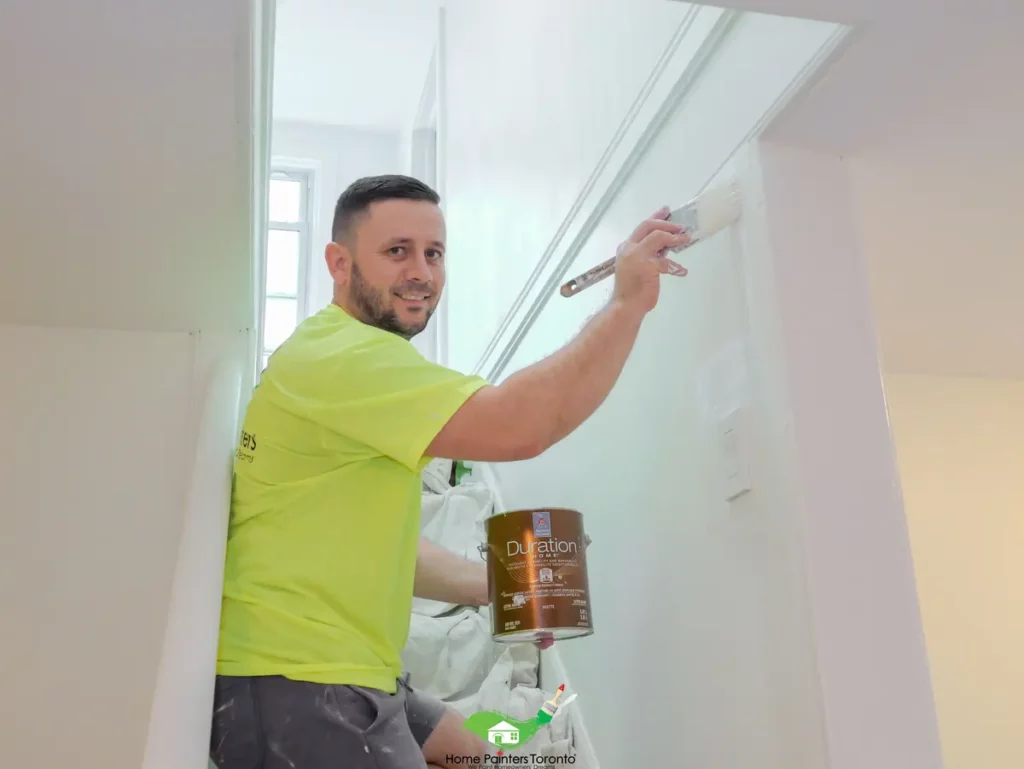
But first, let’s find out…
The Cost of Painting an Interior House in Toronto
1. Approximately how much it will cost to paint the interior “per square foot”?
It really helps to know your approximate square footage. The square footage is based on the floor square footage of your house.
Also, the following prices assume a typical 8ft ceiling height.
• The cost of painting just the interior “walls” only of a home ranges from $2.5 to $3.5 per square foot plus HST.
• Now to paint your entire house, including walls, trim, doors, ceilings, and closets can start at $3.0 to $5.0 per square foot plus HST.
2. The following are the quick way to get approximate estimates of what it would cost to paint the general interior of a typical house in the GTA:
• Small to medium houses (ie. 700 to 1000 square feet) = $2,000 to $5,000 + HST
• Medium to large houses (ie. 1000 to 1500 square feet) = $5,000 to $8,000 + HST
• Large to XL houses (ie. 1500 to 2500 square feet) = $8,000 to $15,000+ + HST
• All these prices include paint and labour and top-quality paint is being used.
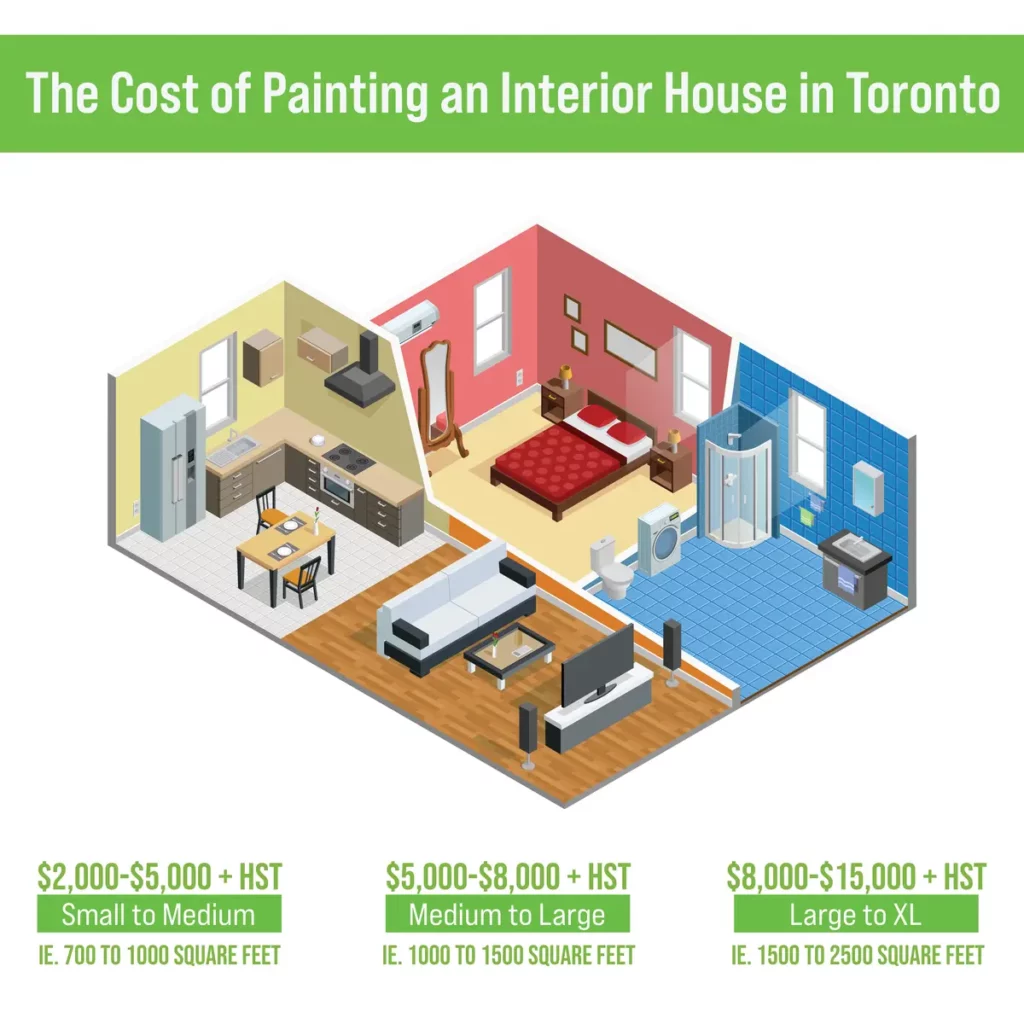
Now that you have an idea of how much it will cost to paint the interior of your house…
It’s time to calculate your own Toronto home painting costs!
How to Calculate Your Approximate Square footage of Your House
Consider this hypothetical scenario: You are looking to paint the interior of your home. And now you are wondering how to get an accurate interior painting estimate. Here’s what you need to know:
• First, determine the approximate floor square footage of the rooms and hallways that need painting. You can do this by getting the real estate listing of when your house was bought if it’s available online or from your agent to save you time.
• If it’s not available, then you can measure it manually yourself.
• Get a measuring tape and figure out how long the space is. The length is always the room’s longest side.
• Then, measure the room’s width, which is its shortest side (both measurements are in feet). Don’t forget to write down the length and width.
• To figure out how much square footage something has, just plug in the length and width measurements into this formula: L x W = floor square footage.
Now let’s do some simple math:
For example, to find the square footage of a room that is 30 feet long and 15 feet wide, you would multiply the length and width together. So, 30 x 15 = 450 square feet.
Okay, so now you’re curious about…
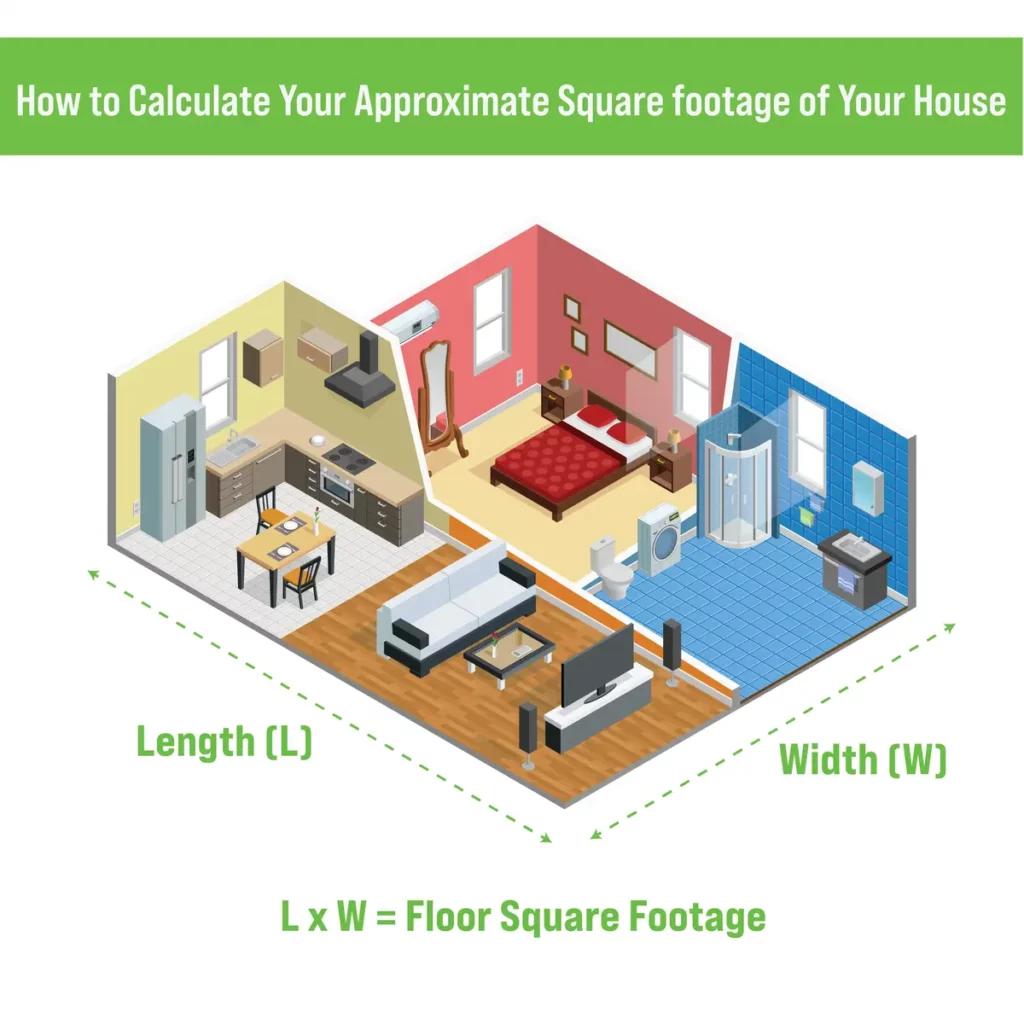
Estimating the Costs of Painting ‘Specific Areas’ in Your House
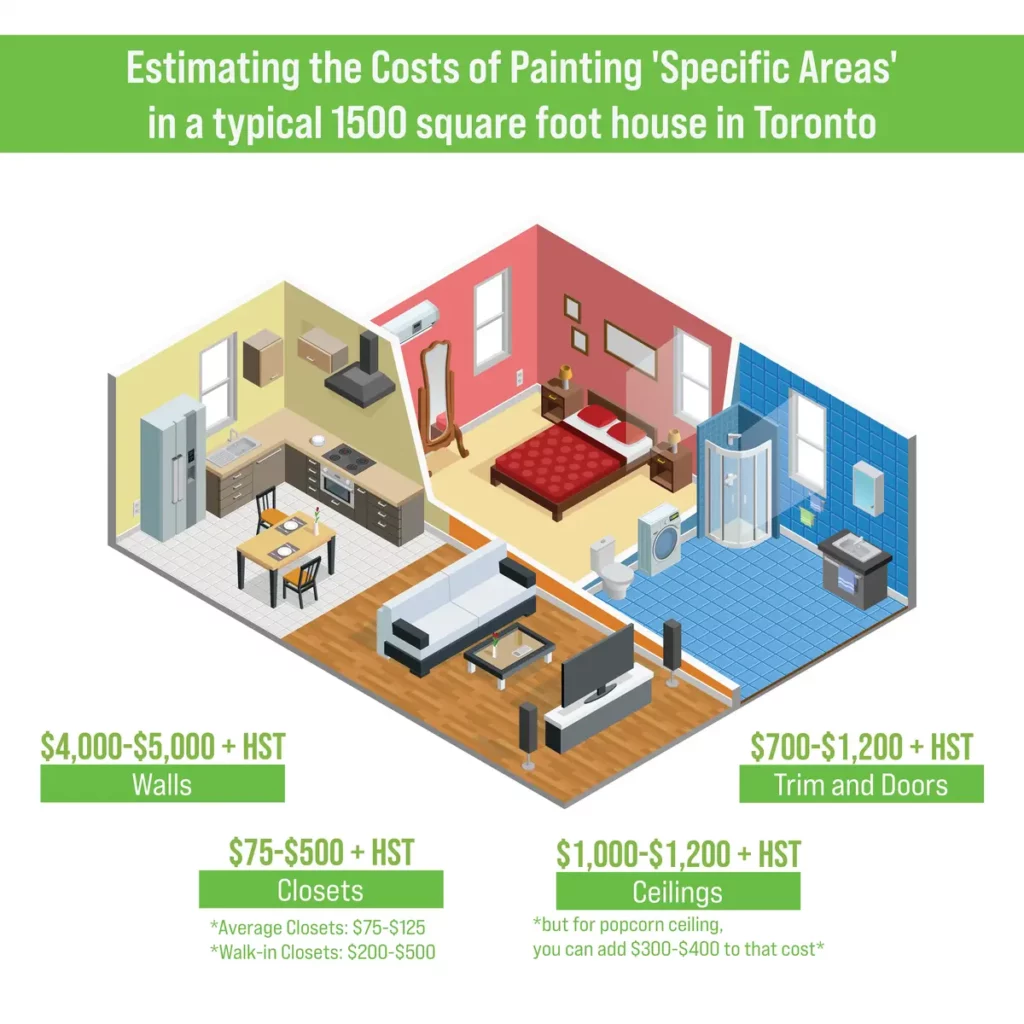
We have so far been talking about just the walls or the entire house itself.
Now, let’s take a look at the specifics of certain parts of your house. For example, you have your walls, trim, doors, ceilings, and closets. Let’s get some approximate costs on these items in particular, should you want your costs broken down even further.
In this example, let’s assume a typical 2-story, 1500-square-foot house in the Toronto area.
1. Walls = $4,000 to 5,000+HST
2. Trim and doors: includes baseboards, door frames, and window frames, and doors = $700 and $1,200+ HST. Note: Most of the time, that has two coats of high-quality white paint.
3. Ceilings: For paint ceiling costs, the average cost is between $1,000 and $1,200+HST. But for popcorn ceilings, you can add about $300-400 to that cost.
4. Closets: A house this size in Toronto usually has between 3 and 5 closets. An average-size closet costs between $75 and $125. Costs range from $200 to $500 for walk-in closets that are bigger.
*All these prices include paint and labour and top-quality paint is being used.
And there you have it! I told you it was easy!
But there’s still more to learn! Now that you’re more familiar with estimating the approximate price of painting your house, let’s take an in-depth look at the specific factors that can drastically affect the price of your house.
Factors that Affect the Cost of House Painting
1. Size of Your House
The larger the house, the higher the cost. It’s as simple as that. The taller your ceilings, the higher the cost as well. The bigger the house, the more paint you need, and the more time it will take to apply it properly. This means that homeowners who want their whole house painted should expect to pay a lot more than those who only want a room or two done.
2. Type and Condition of Your House
If you have an older home that has been neglected over time, it’s going to take more paint and labour to get it back in shape than if you had a newer house where everything is in good condition. For example, if you have a lot of peeling paint, cracks, and holes in your walls, it will take more time and effort to repair them than if you have newer paint on your home.
The type of house you have will also affect the price. If you live in an older downtown Toronto home with lathe and plaster walls, the cost will be higher than it would be for a newer home with drywall. This is because you’ll need to add another coat to cover up any imperfections in your walls.
3. Special Features
The third factor that affects the cost of painting is any special features you may have in mind for your home’s decorating scheme. For example, “I want difficult areas of my house painted.” Some of these more difficult areas may include:
• High-ceiling skylights difficult to reach
• French windows or French doors
• Stained or bare wood (usually needs primer + 3 coats of paint)
• 2-tone painting to be done on items such as wainscotting or other trim worn
• Spray finish vs brush and roll finish
• Smoke stains from cigarettes or a fire
These factors add to the whole house painting cost because they require extra material, labour, and skill on behalf of professional painters.
4. Different Qualities of Paint
The type of paint you choose can also impact the cost. Different paint qualities have different qualities and costs associated with them, so your decision here can have a big impact on your overall budget.
• Generally, it’s better to use a higher-quality paint than a cheaper one. The reason being is better quality paints will last longer, cover better, and be more durable in the long run. Both Benjamin Moore and Sherwin Williams have better qualities of paint and are pretty much can be found everywhere in the Toronto area.
Also, the existing paint base makes a difference in what it will cost to paint your house:
• Oil-based paints: If your existing areas have oil-based paint existing then it will definitely cost more to paint than if they were latex. The reason is, if they are oil-based paints, to convert them to the more modern latex based requires scuff sand and a primer sealer application before painting them 2 coats of paint.
5. Prep Work and Surface Preparation
The amount of prep work prior to painting and surface preparation can increase costs because it requires specialized equipment (such as sanders) or materials (such as primer). Generally, the more prep is needed, the more it will cost you to paint your house. Here are some examples of factors that can increase the cost:
• Drywall walls vs lathe and plaster = plaster walls almost always require more prep and cost
• Pre-primed/painted wood vs bare wood or stained wood = bare wood and stained wood will often cause you more prep and coats of paint
• Kitchen cooking and oil stains
• Cigarettes, candles, or fire smoke damage will always require more prep and priming
• Water or drywall/plaster damages will always increase the amount of prep needed
• Drywall or plaster holes and repairs will always increase the amount of prep work
• Covering dark colours or painting with bright colours will always require more coats of primer and paint
As you can see, the above scenarios will definitely affect the price of your painting job.
Please consider this when getting quotes and trying to estimate the cost of your interior painting job as well.
6. Amount of Existing Furniture
The amount of existing furniture will greatly slow down the painters when they paint, so will impact the cost of painting.
Obviously, the more the furniture, the more the cost of painting.
7. Number of Colours, Accent walls, and Colours you pick
• Generally, a typical 3-bedroom home will have 4-5 colours. If there are more then it will take more labour and material and cost more.
• If you have any accents or features walls. Then this will take more labour and material and cost more as well.
• If you pick extremely dark or bright colours or very white colours, it will often require extra coats of paint and more labour and material as well.
And wait, there’s more…
I know we spent the entire time discussing the “cost” of interior house painting. As a bonus, I’d love to give you 7 tips and tricks on how you can get a cheaper price from your painting contractor. And please feel free to use them on me should we ever meet!
7 Tips and Tricks on How to Get a Cheaper Quote from Your Painting Contractor
While most people think that the price of the painting is set in stone, that’s not always the case. In fact, there are plenty of ways how to get a cheaper painting quote for your project. Here are some tips from Brian Young, the painter himself:
1. Time and Flexibility
The more flexible you are, the better. Think about when you need the painting done. If it’s urgent, then you’ll have to pay a higher price for it.
2. Have your house empty
If you don’t have any furniture in your house, the painter can work more efficiently and complete the project faster. And this will also allow him or her to spend less time moving furniture around.
3. Let the painter choose the brands of paint
The painter will know which brands are best and how to use them. So, if you want to save money, let the painter decide what brand of paint to buy.
4. Make your payment terms flexible
Most reliable and well-known painters will agree to payment terms. Accepted payment methods include: Visa, Mastercard, American Express, and postdated checks. Inquire if paying with a check will result in a different price for painting your home.
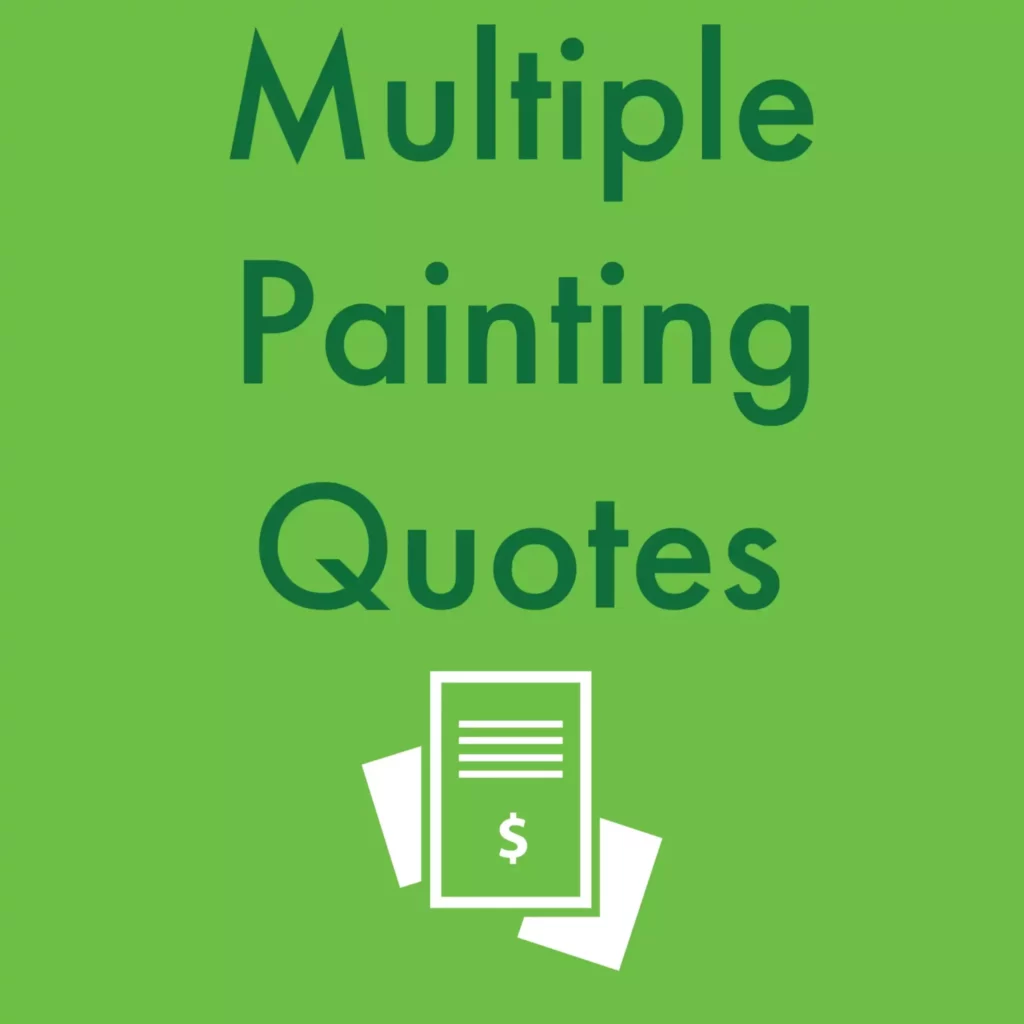
5. Get multiple painting quotes
Get multiple quotes from reputable painters. This will help you find the best price for your house painting project. Consequently, the more bids you receive, the better idea you’ll have about the cost of painting and how much work is involved.
6. Painting more is better
Think about adding more painting, carpentry, or handyman services to your project to make it bigger and get a discount.
7. Negotiate
Always ask for a lower price or discounts. You can often get an additional 5-15% off the final price after the negotiation process is complete.
These are only a few tips to help you save money on painting your home.
You may also want to watch the video below for a few more tips on how to get the best deal on your home painting project.
The most important thing when hiring a house interior painter is to make sure they are experienced and skilled. If a painter offers you an incredibly low price on your project, there may be something wrong with their workmanship or their equipment—or both! Furthermore, it’s better to pay more for quality than cheap out on something that could end up costing you more money down the line because it wasn’t done right in the first place! This blog may help you avoid some common mistakes that homeowners make when choosing a painting contractor: The 7 Biggest Homeowner Mistakes When Hiring A Painting Contractor
Final Thoughts
As you can see, there are so many different factors that affect the cost of your interior house painting than simply the square footage.
This is why it’s great to use this guide as a way to get an approximate price for your project, but it’s much better and more accurate if you had a professional estimator come by your house to quote it in person. Ultimately, you’ll want to hire a painting contractor that can give you a price that works with your budget while still providing quality workmanship.
We, at Home Painters Toronto, can do just that. Indeed, we can provide you with the information, advice, and estimates you need that will meet your needs and budget.
Most Interesting Blogs Related to
“The Cost Of Interior House Painting In Toronto in 2025”
To learn more about us, please visit Home Painters Toronto. You’ll discover that this award-winning firm has helped hundreds of homeowners across Canada give their properties a fresh new look with some expertly applied paint—and it can do the same for you! Give us a call at 416.494.9095, or email us at [email protected]. Also, don’t forget to follow us on all our social channels below as well!



